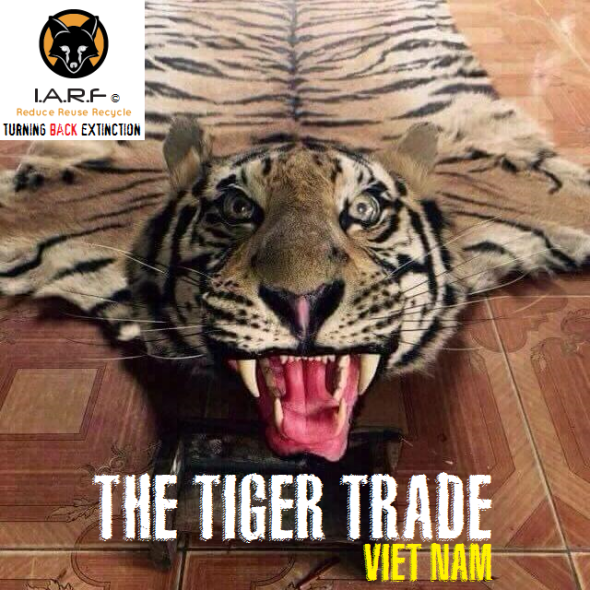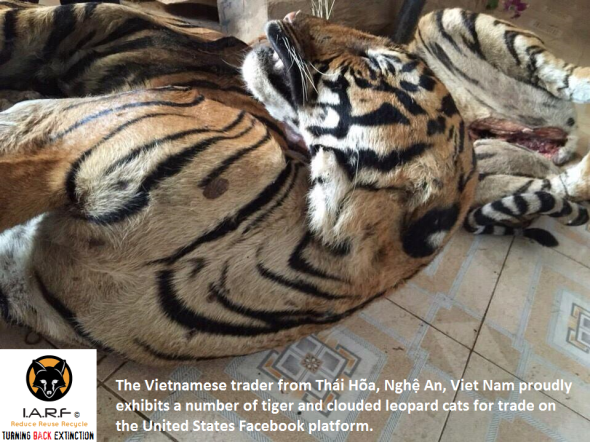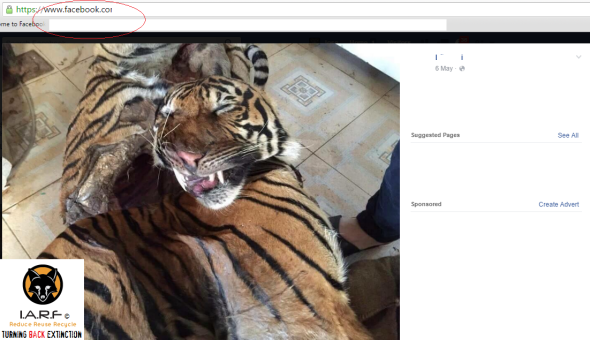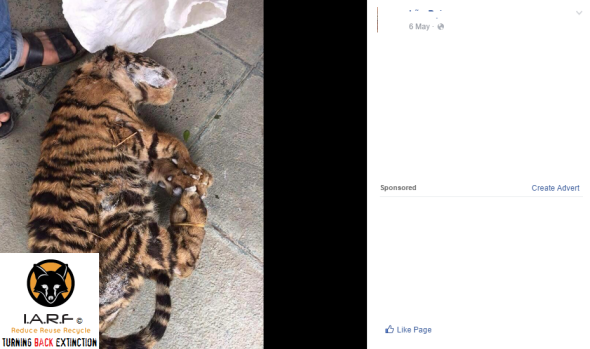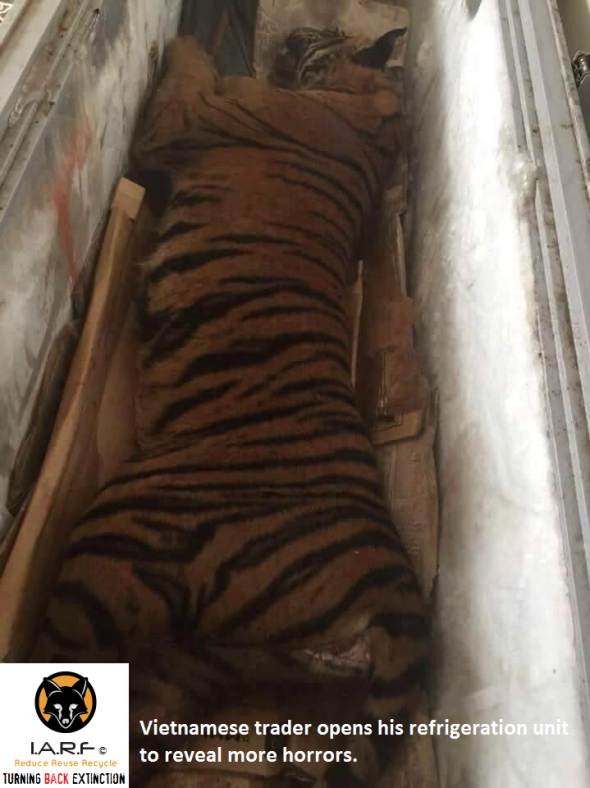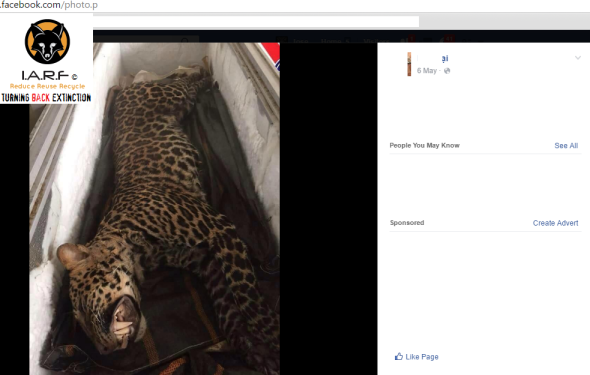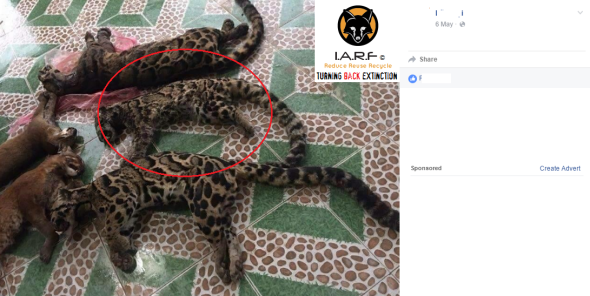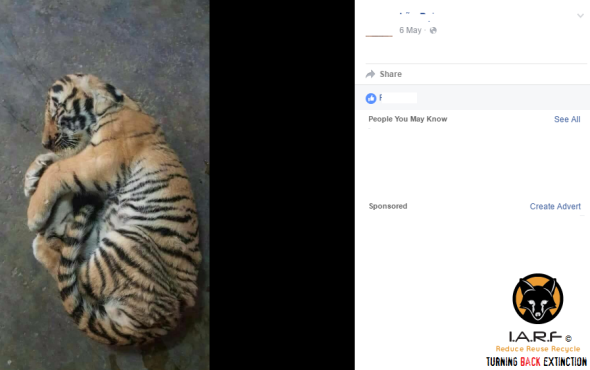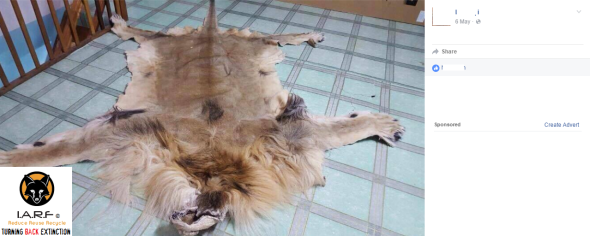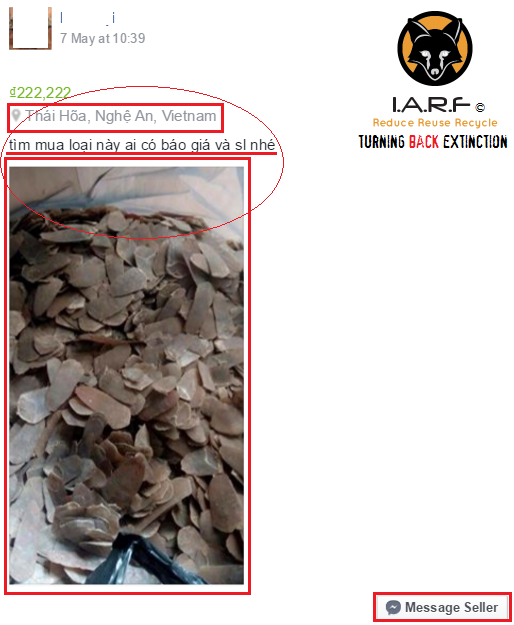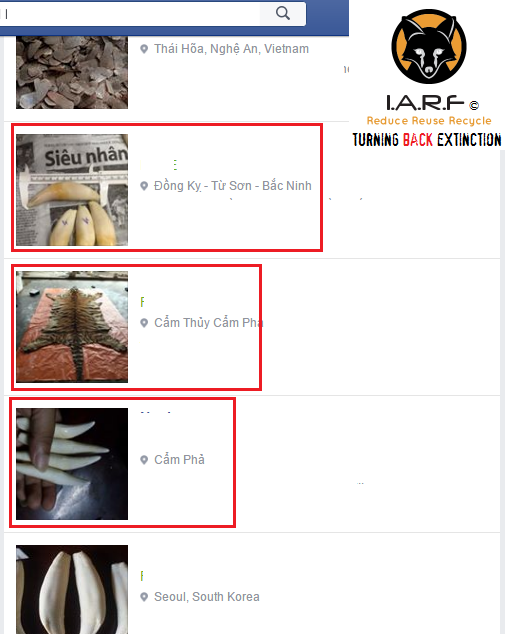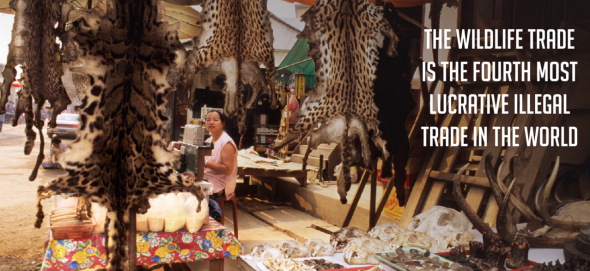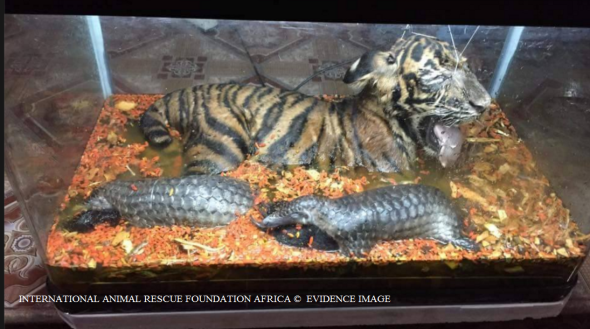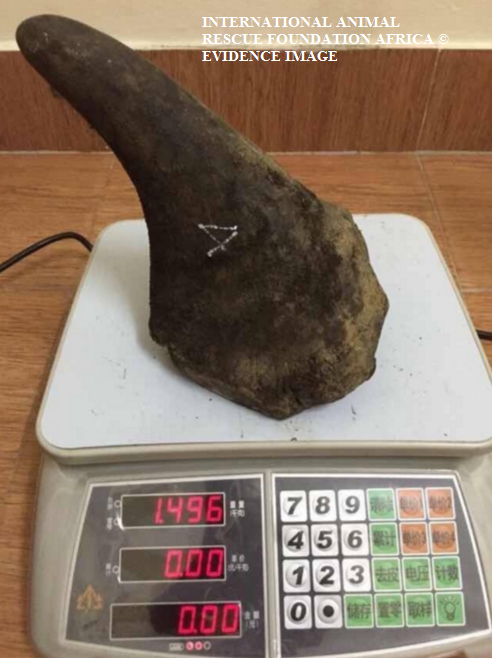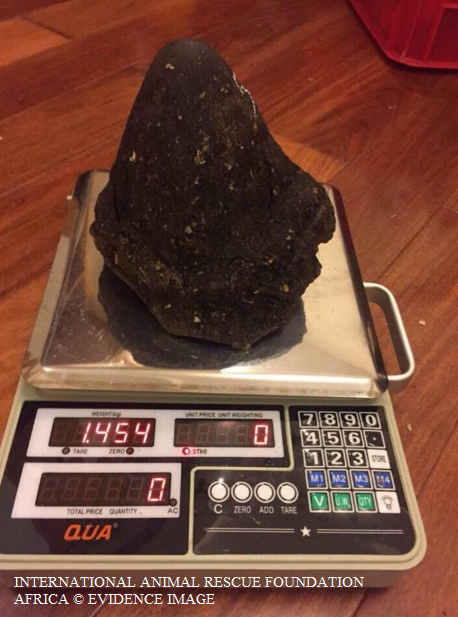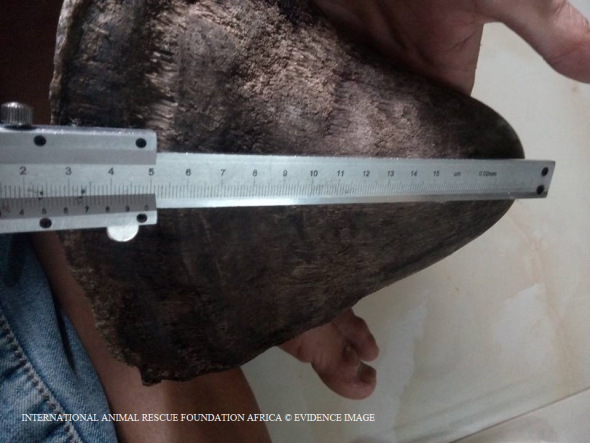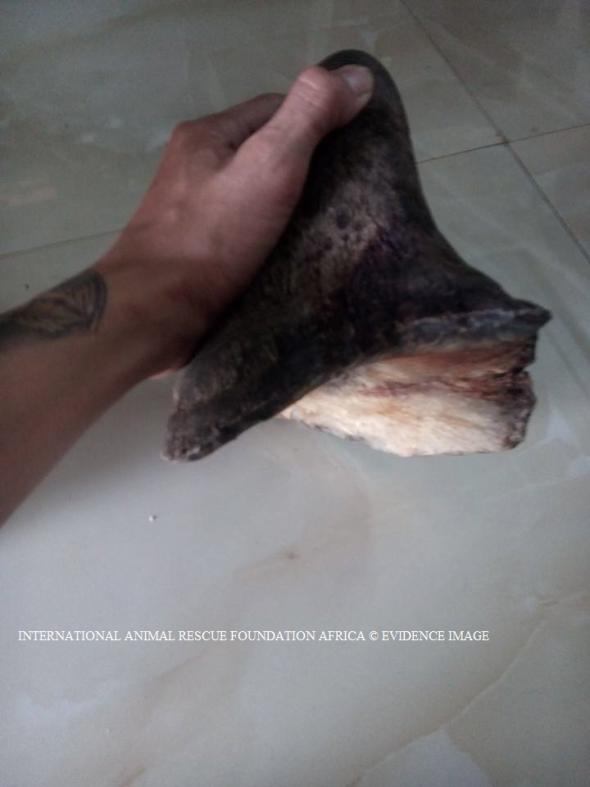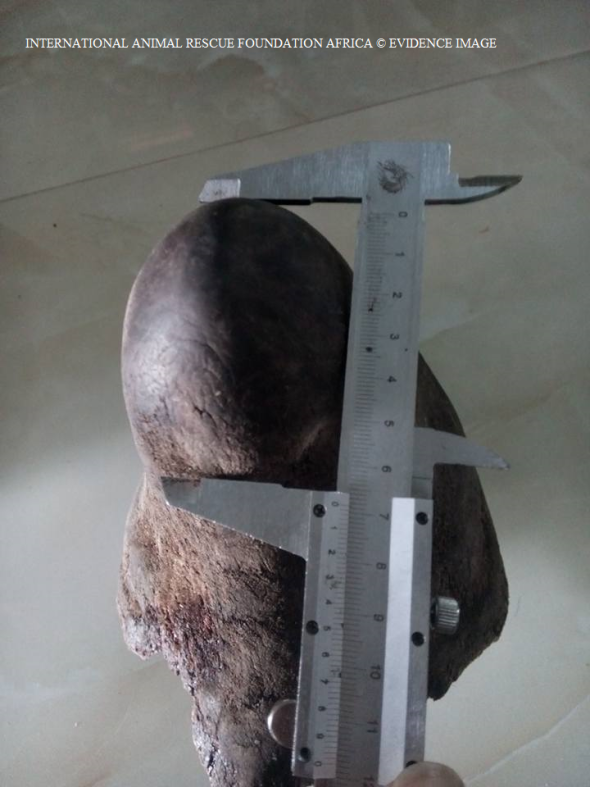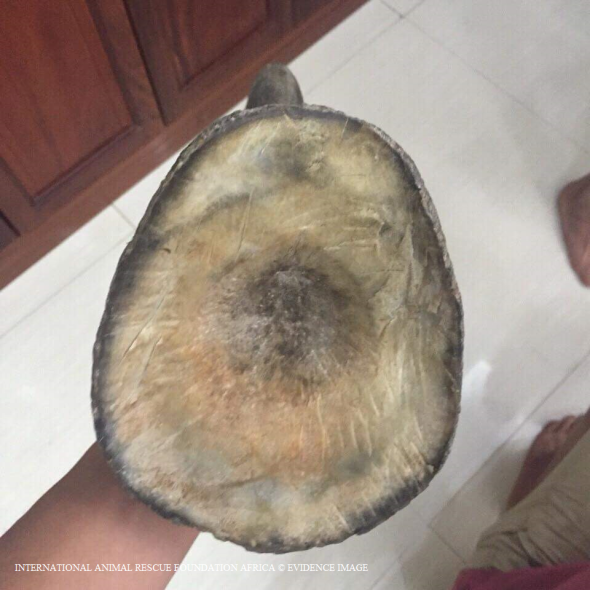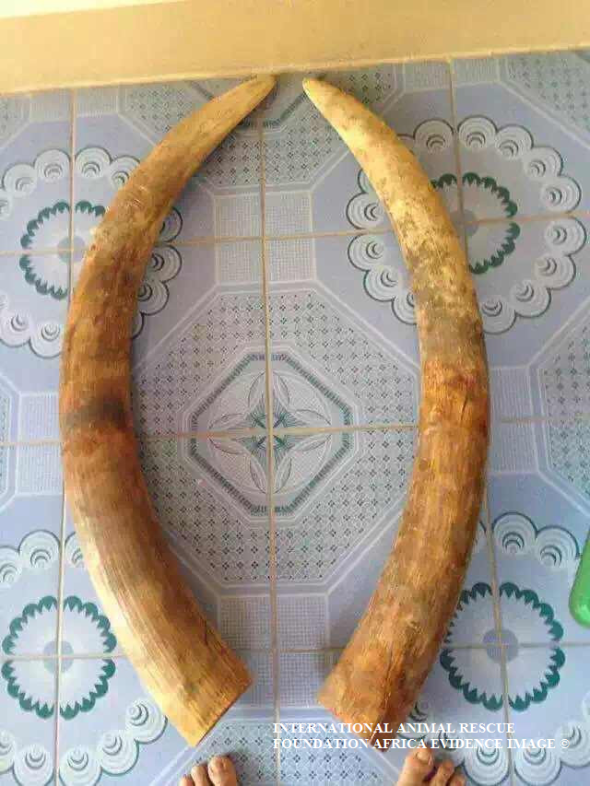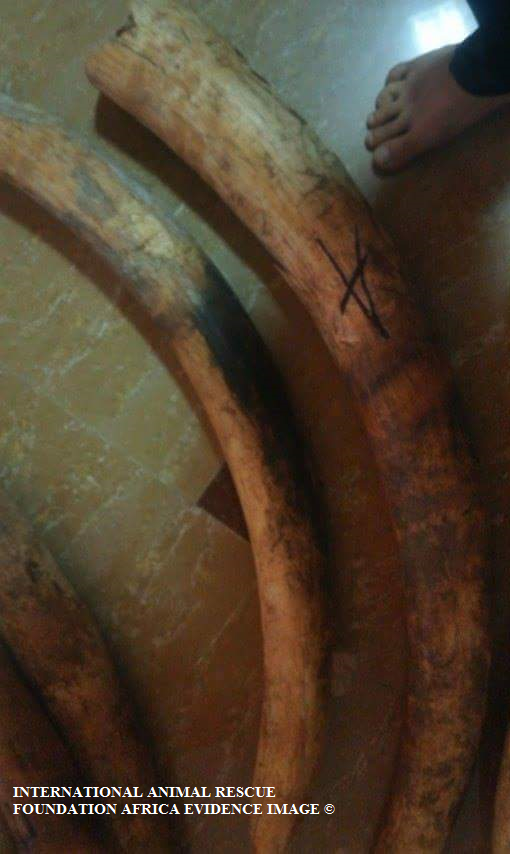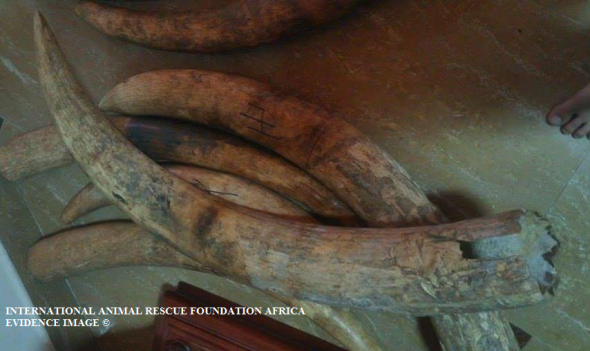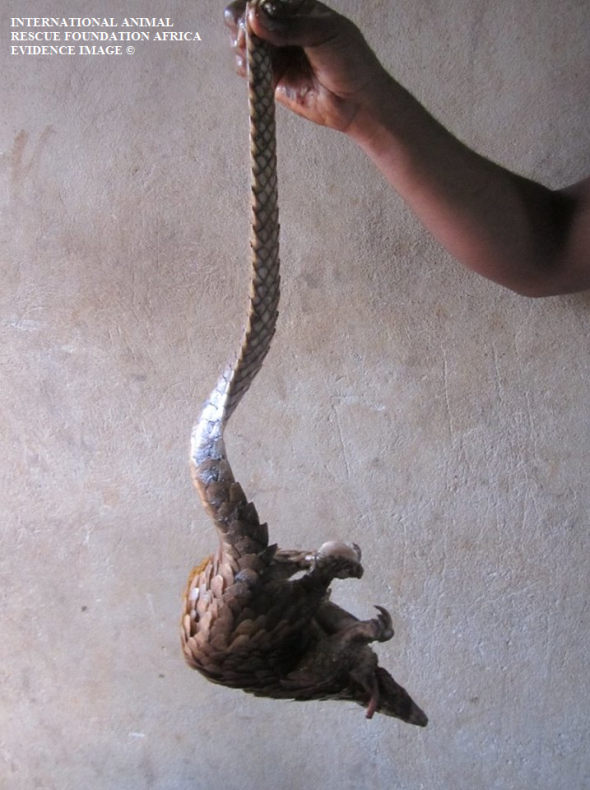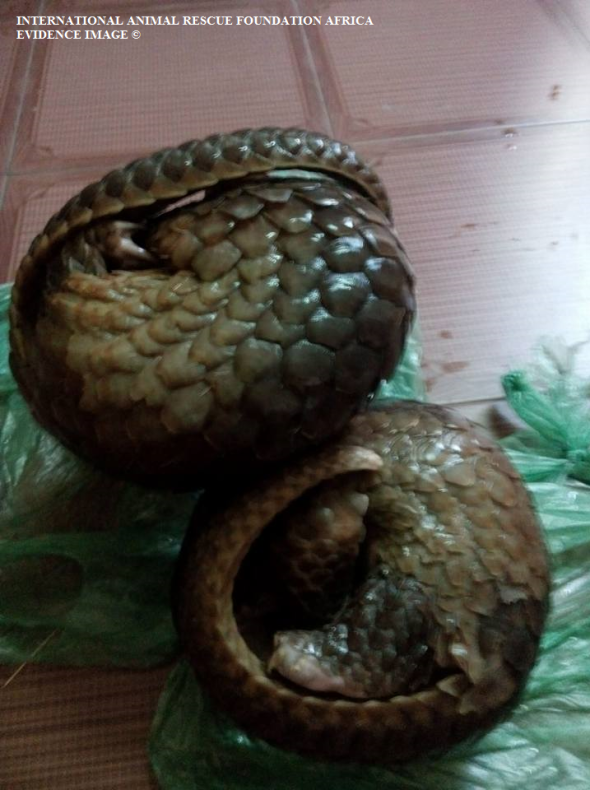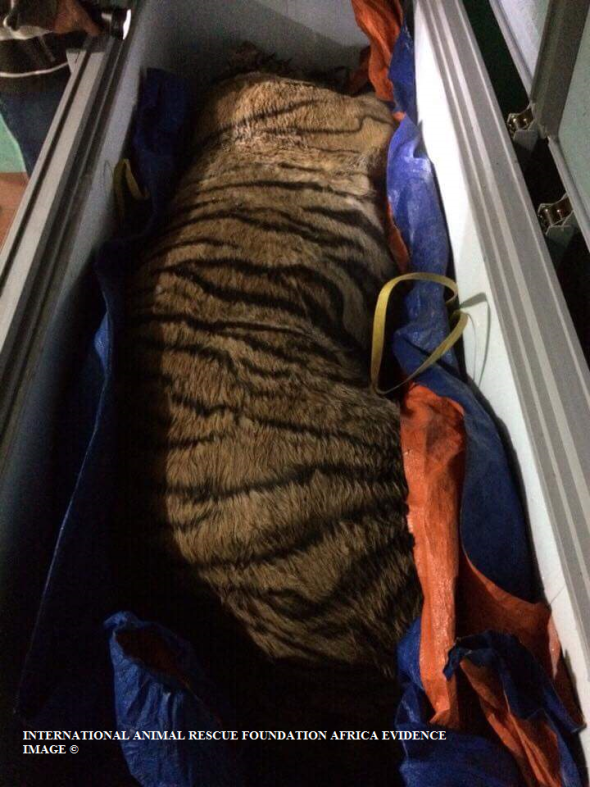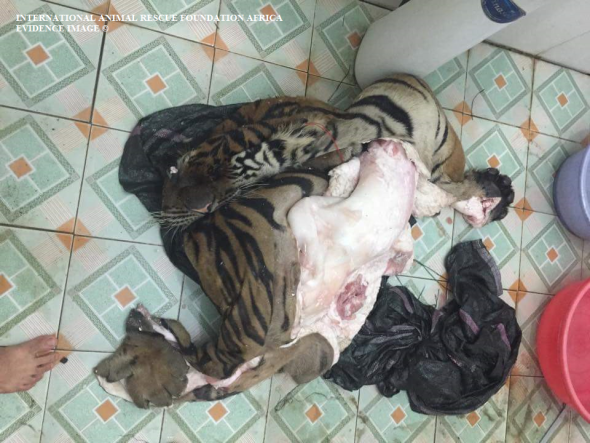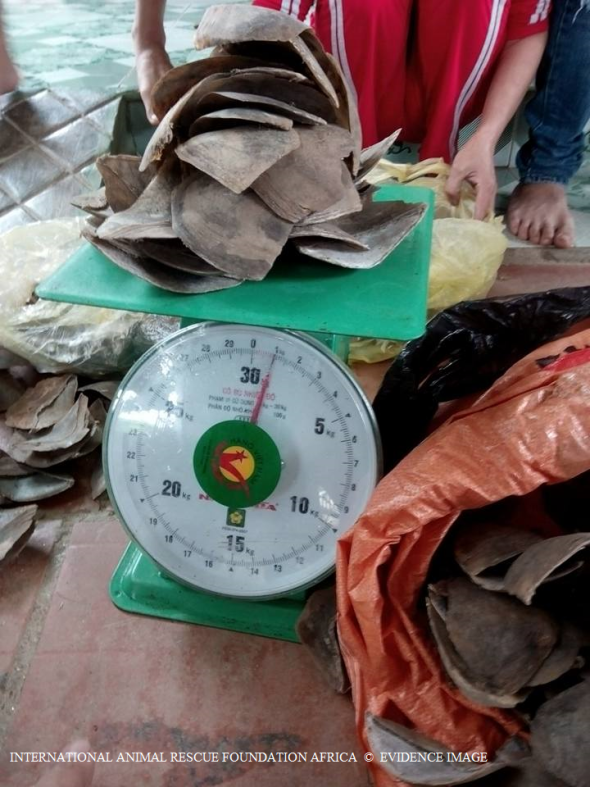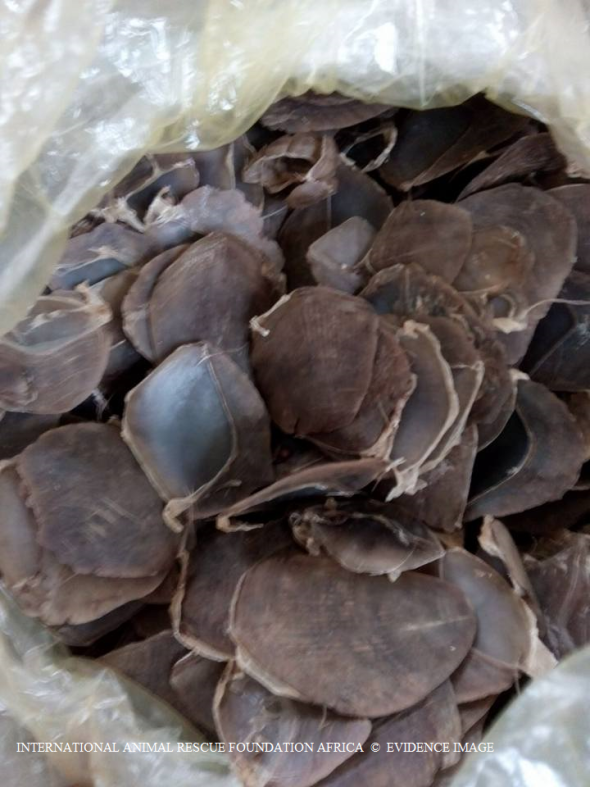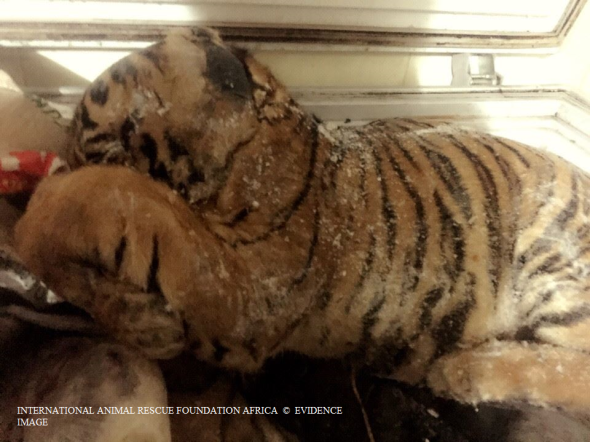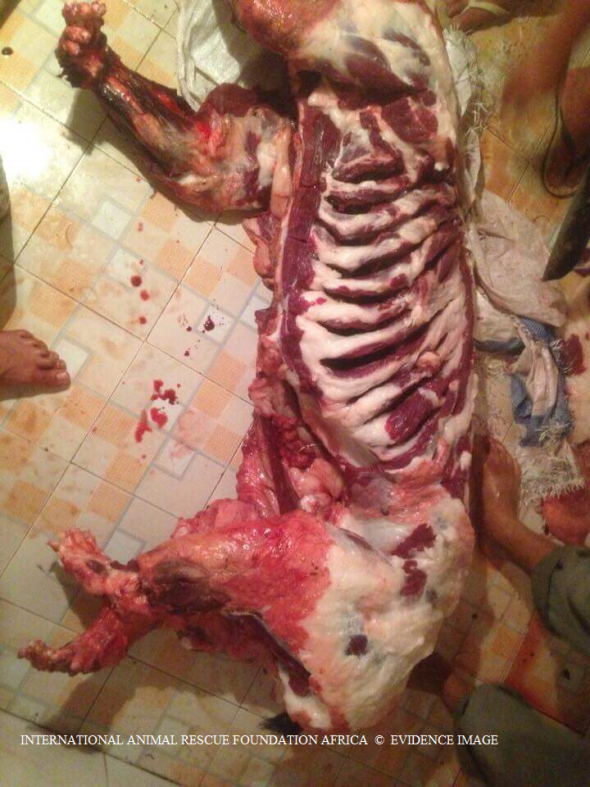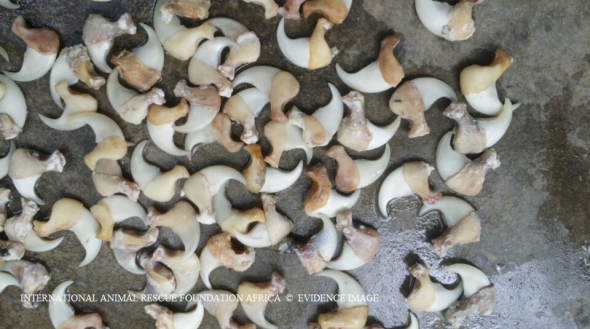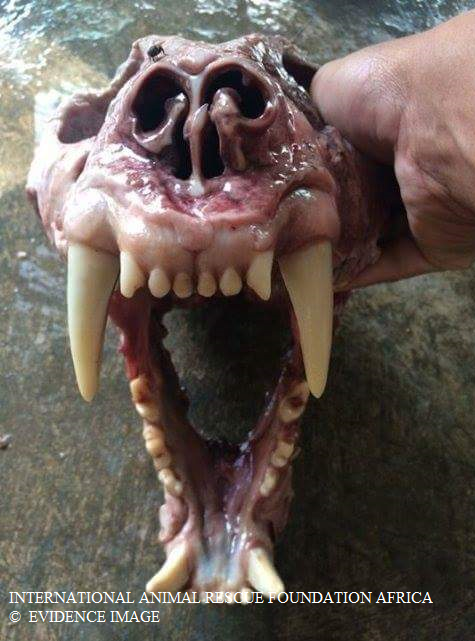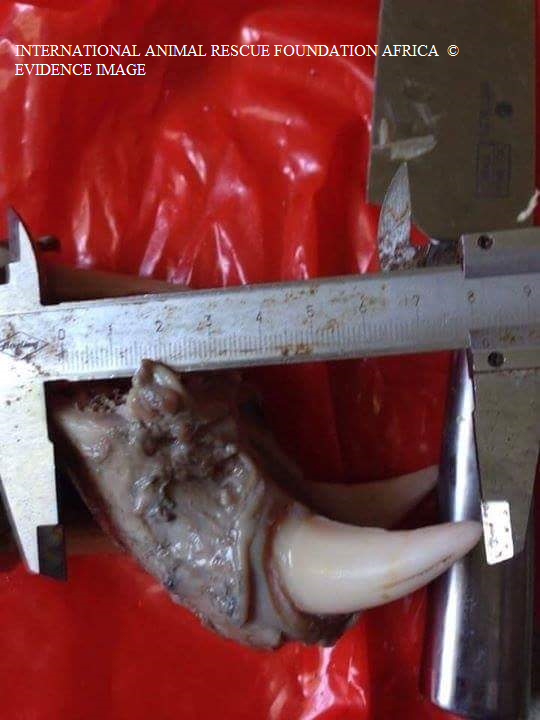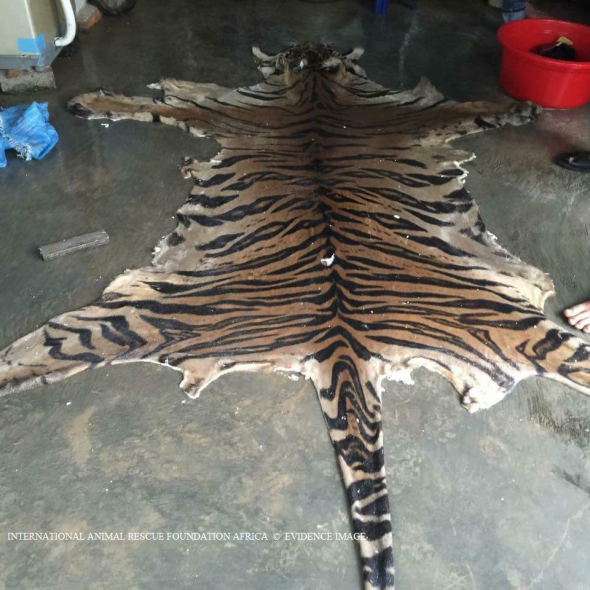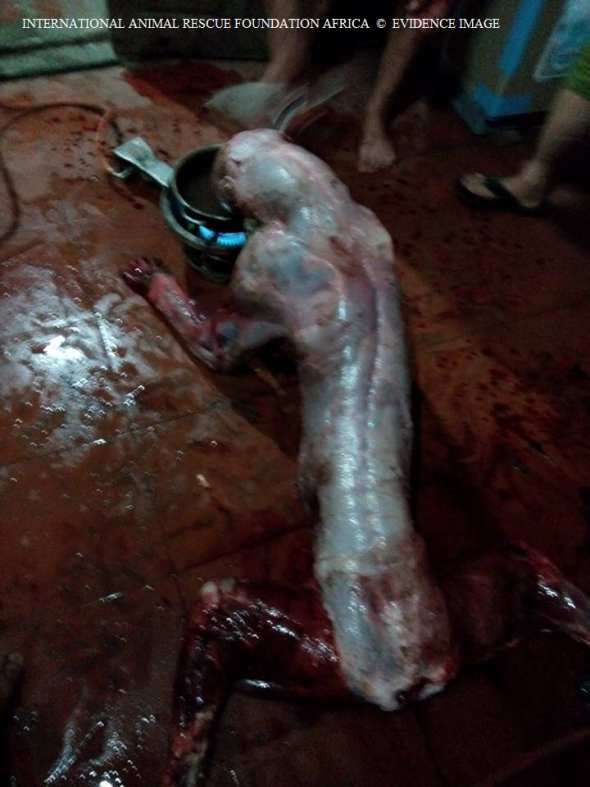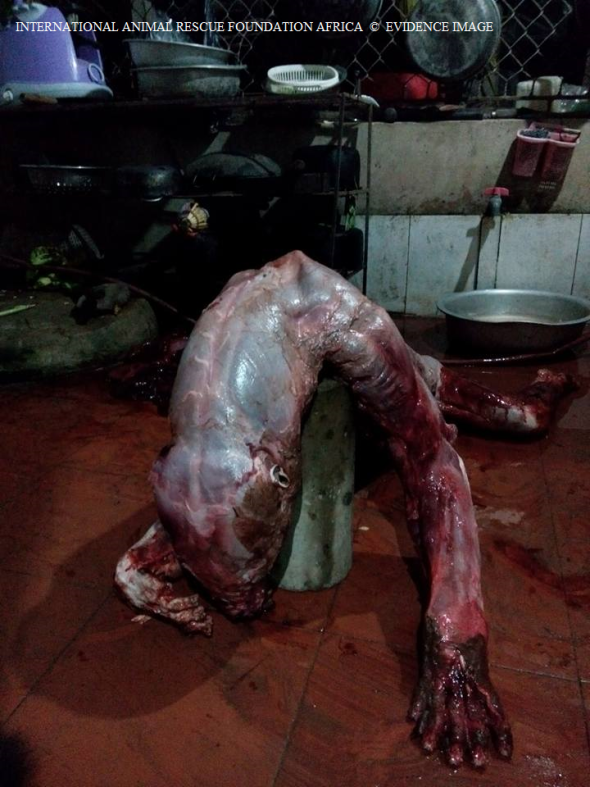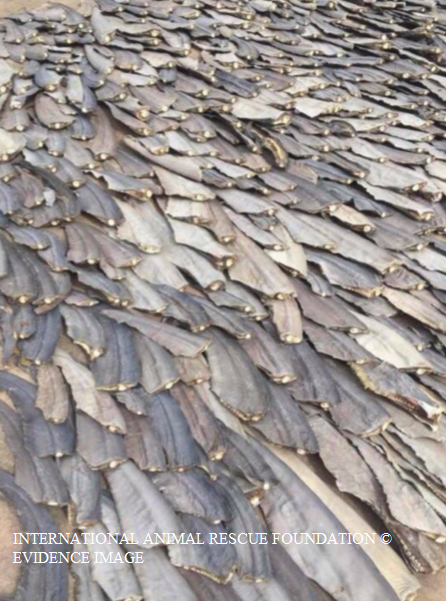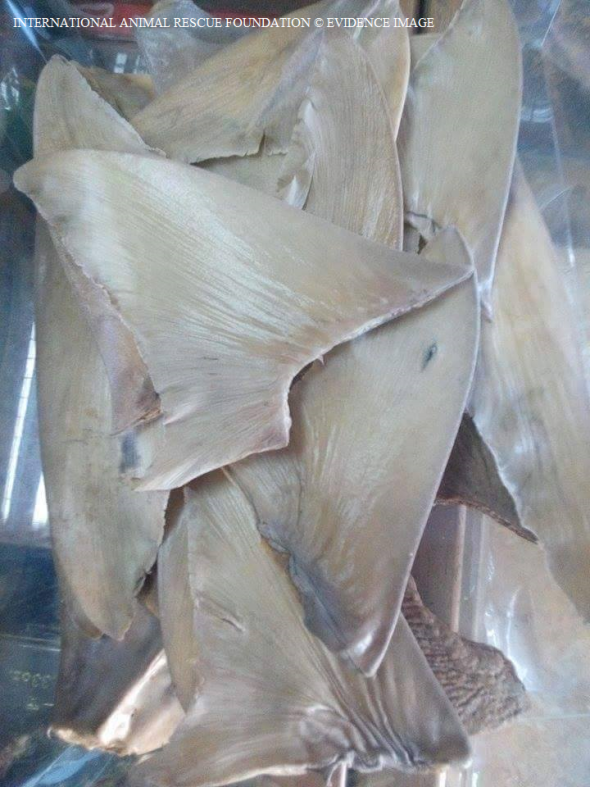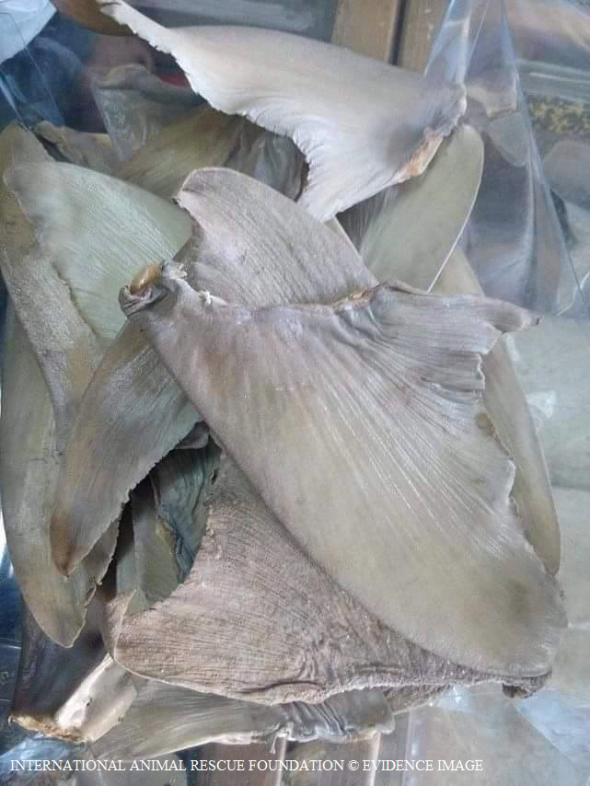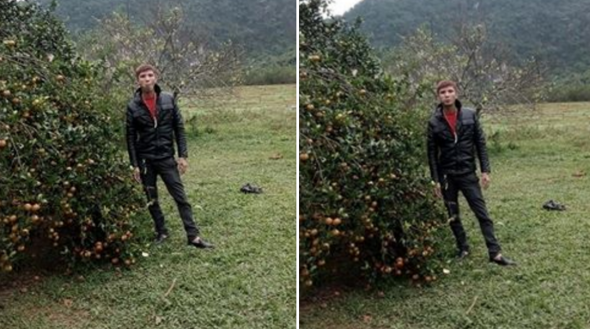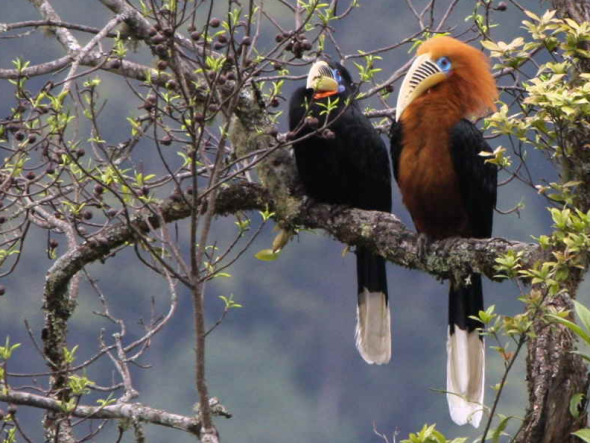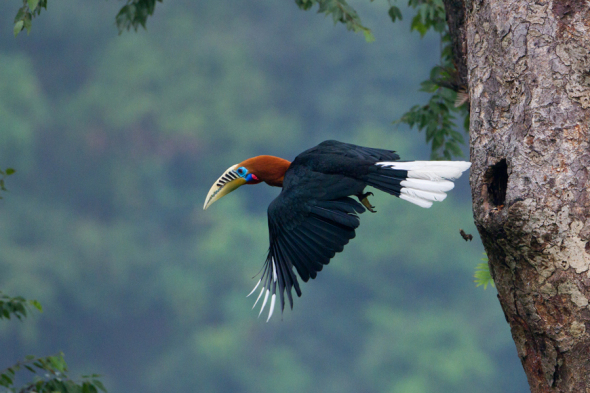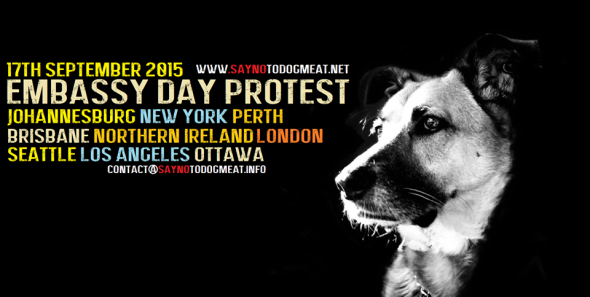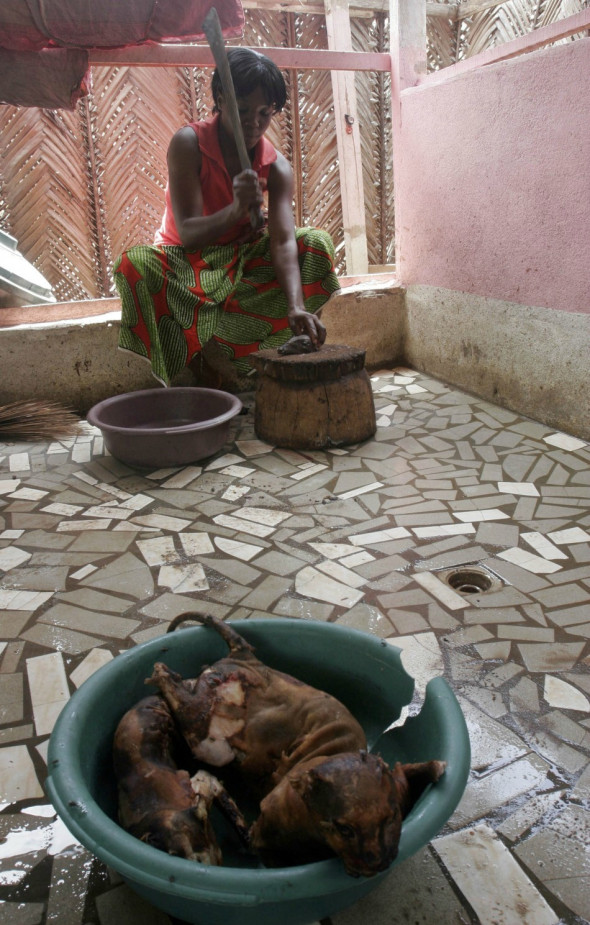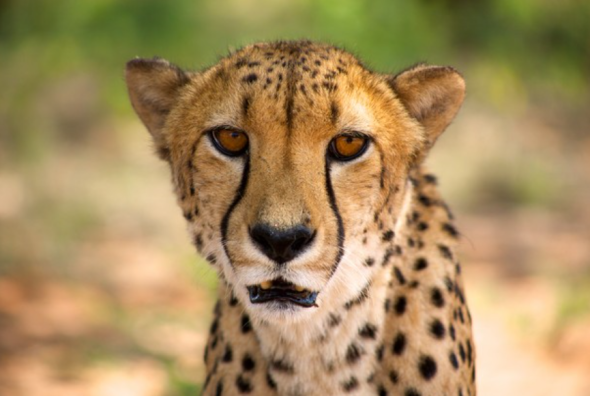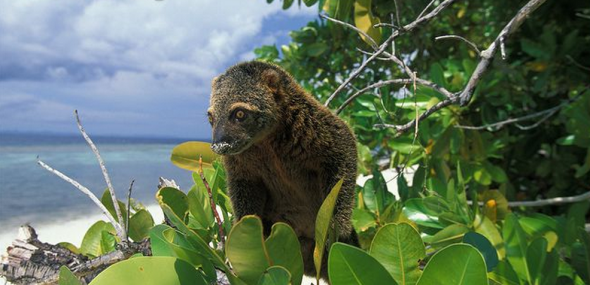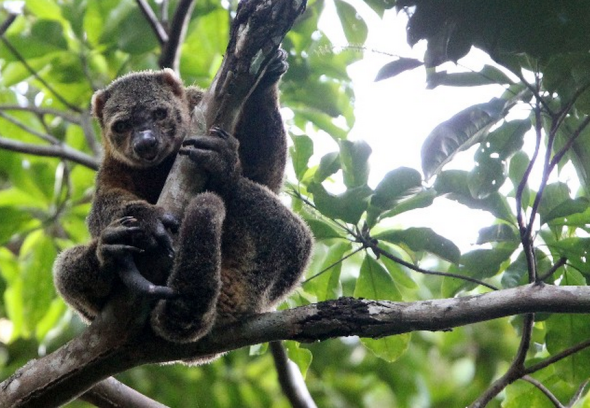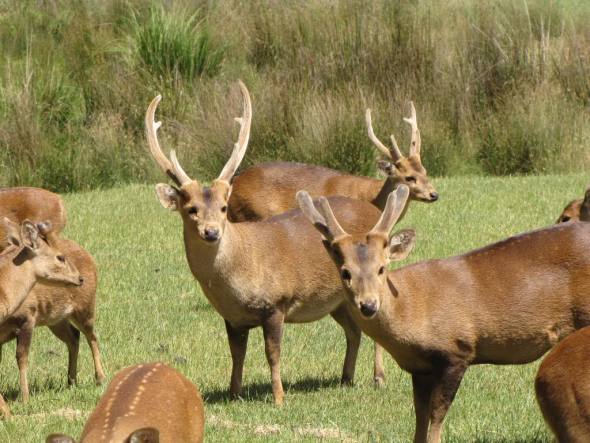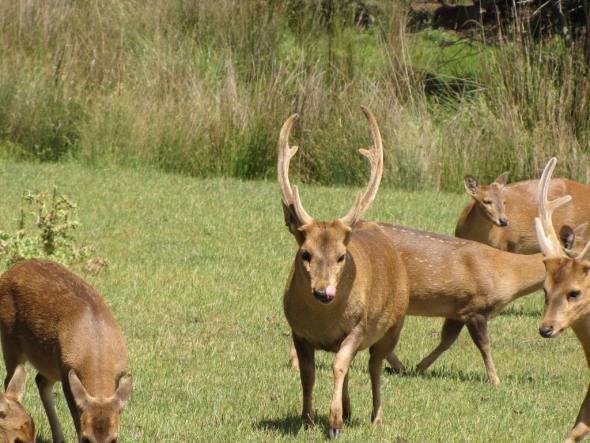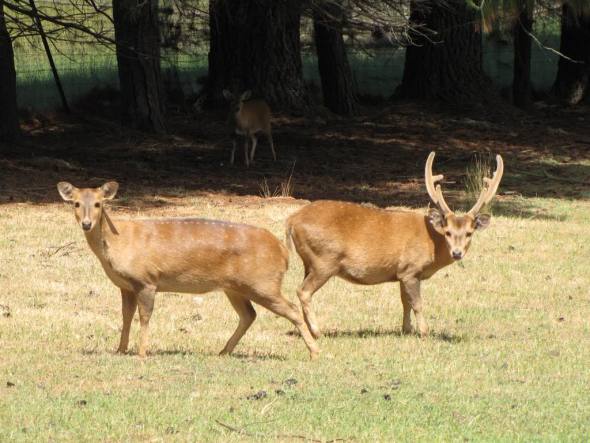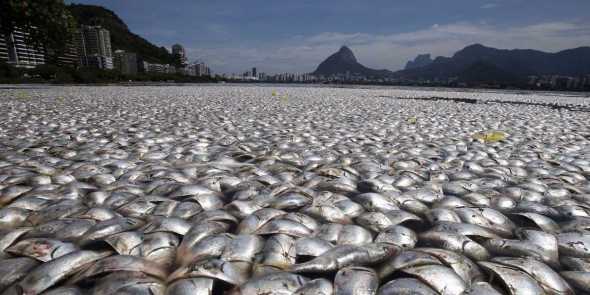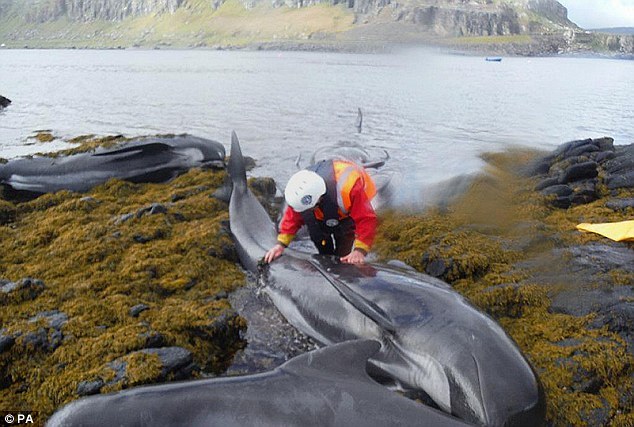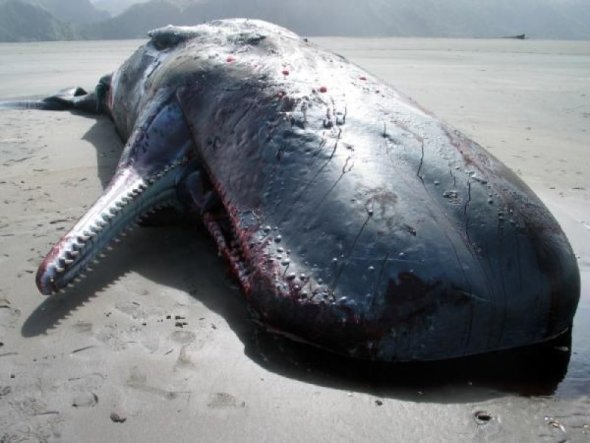ENDANGERED SPECIES MONDAY | SUNDASCIURUS HIPPURUS
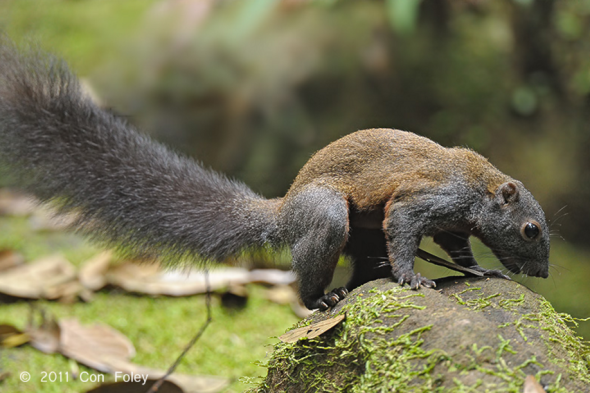
ENDANGERED SPECIES MONDAY | SUNDASCIURUS HIPPURUS
This Mondays (E.S.P) post - [Endangered Species watch Post] I am documenting on the horse tailed squirrel, scientifically identified as Sundasciurus hippurus. (Image: Horse tailed squirrel. Credits: Con Foley)
Listed as [near threatened] the species was first discovered back in 1831 by French Dr Étienne Geoffroy Saint-Hilaire (15 April 1772 – 19 June 1844) who was a French naturalist who established the principle of “unity of composition”. He was a colleague of Jean-Baptiste Lamarck and expanded and defended Lamarck’s evolutionary theories.
Geoffroy’s scientific views had a transcendental flavor (unlike Lamarck’s materialistic views) and were similar to those of German morphologists like Lorenz Oken. He believed in the underlying unity of organismal design, and the possibility of the transmutation of species in time, amassing evidence for his claims through research in comparative anatomy, paleontology, and embryology.
Dr Geoffroy ‘allegedly’ named the squirrel ‘the horse tailed squirrel’ because the squirrels tail resembled that of a horse tail, although even I myself find that somewhat difficult to digest, as in all due honesty the tail looks more like a bushy tail, which horses don’t really host. Horses tend to have long, slender and non-bushy tails, while others do host a type of busy but lose tail. I could be wrong?!
While as yet I cannot prove this, I do believe that Dr Geoffroy may have named the squirrel after a wild dwarf Asiatic horse endemic to South East Asia - that as yet we environmentalists have as yet to discover more about, furthermore that species of horse is likely to be extinct.
Moving on and (as explained) the horse tailed squirrel has been listed as [near threatened]. From 1996-2012 the species was placed into the category of [lower risk/least concern]. Lower risk/least concern is defined as: A taxon is Least Concern when it has been evaluated against the criteria and does not qualify for Critically Endangered, Endangered, Vulnerable or Near Threatened. Widespread and abundant taxa are included in this category.
International Animal Rescue Foundation Asian Environmental Scientists have been studying this species (among others) and can confirm from camera traps that the mammal’s populations are still declining significantly. However to what extent we’re still unsure.
As yet there have been ‘no reported extinctions’ within anyone of the species endemic countries being: Brunei Darussalam; Indonesia (Kalimantan, Sumatera); Malaysia (Peninsular Malaysia, Sabah, Sarawak) and Thailand. Since 2012 environmental fauna scientists have tried in vain to establish a mean population count, unfortunately as yet we (the organisation) and non-related organisations cannot determine a true population count.
Back in 2004 Dr’s Han and Giman pers. comm stated that the species was common, furthermore there was no evidence to prove the species was severely fragmented, or nearing endangered. The species prefers to inhabits lowland forests, however is also located in secondary forests too. Scientists reported that within these secondary forests species populations were on the decline.
Unlike your normal European squirrel the species can commonly be located at ground level foraging for food ranging from nuts, fruits, seeds and insects. Interestingly the species is diurnal (again unlike the European squirrel). Diurnal means the species will be active either during the day or night. Whereas the European squirrel is normally pretty active during the daytime, then rests during the night.
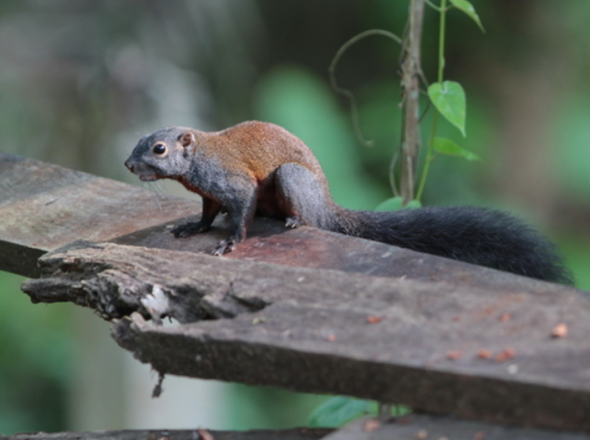
Image: Horse tailed squirrel: Photographer unknown
While the species ‘often lives within the trees’, horse tailed squirrels will spend a majority of their time at ground level. It has been suggested that one of the reasons for low densities of this species in Malaysian tropical rain forest is competition from the great variety of other arboreal vertebrates (such as birds, and especially primates) for food, especially fruits and leaves, which are among the food items preferred by squirrels.
There are by few very few threats actually known, however don’t take that as positive news. The species is threatened by habitat loss due to logging and agricultural conversion. I expect the first extinctions are likely to be witnessed within Malaysia (based on past and current research). Malaysian deforestation and palm oil plantations all pose a very high threat to the horse tailed squirrel as well as many other species of flora and fauna.
Nearly 60% of Malaysia is still covered with natural rain forest, unfortunately much of Malaysia forests are devoted to cash crop plantations, particularly oil palm and rubber, with tree crops occupying 17% of Malaysia’s land area. These are ideally suited to Malaysia’s hot, wet, and humid climate.
While many of us are aware of ‘palm oil devastation’ which is probably by far the biggest threat to a wide number of animals and plants - including the horse tailed squirrel. I would also like to point out to many non-meat and dairy consumers (I.e: Vegans), that while coconut plantations are for now considerably small. These plantations are still being developed and farmed within areas that once saw pristine green forests - now nothing more than a brown churned up heap of land growing and harvesting coconuts too.
In Malaysia, coconut is the fourth important industrial crop after oil palm, rubber and paddy in terms of total planted area. It is also one of the oldest agro-based industries. As an industry, coconut contributes very little to the overall economy of Malaysia (contribution to export earnings of about 0.08% in 2006).
Recent competition with oil palm for land has also resulted in the decline of the total area under coconut cultivation: in 2001, the area was about 151,000 ha and this has gradually decreased to the acreage of 109,185 ha in 2007. Based on the estimates given under the 9th Malaysia Plan, it is anticipated that the acreage will consolidate to around 80,000 ha by 2010. However regardless of this ‘alleged decline’ most if not all coconut plantations are farmed within forests where species such as the horse tailed squirrel is inhabiting.
The species is found in several protected areas, including Pasoh Forest Reserve. Environmentalists state the need for further comparative study on this species’ abundance, density and distribution and its relationship to forest structure or habitat quality, spatially and temporally, in hill dipterocarp forest of Malaysia is greatly needed.
For now the future of the horse tailed squirrel is uncertain. I’m doubtful the species will remain extant within Malaysia for much longer - with possible localized extinctions witnessed here soon. More research needs to be undertaken on the species, furthermore we also need to research just how much ‘pristine green forest is being converted for fruit, cereal crops, oils and plant milk crops’ rather than just palm oil. While I find palm oil agriculture incredibly concerning. Knowing that anyone of our vegan, vegetable and fruit crops is originating from areas where animals are being killed - is just as concerning too.
Thank you for reading.
Dr Jose C. Depre PhD. MEnvSc. BSc(Hons) Botany, PhD(NeuroSci) D.V.M.
Master of Environmental Botanical & Human Science.
(Environmental, Botanical & Human Scientist).
Endangered Species Friday | Bubalus mindorensis | Asia’s Next Extinction!
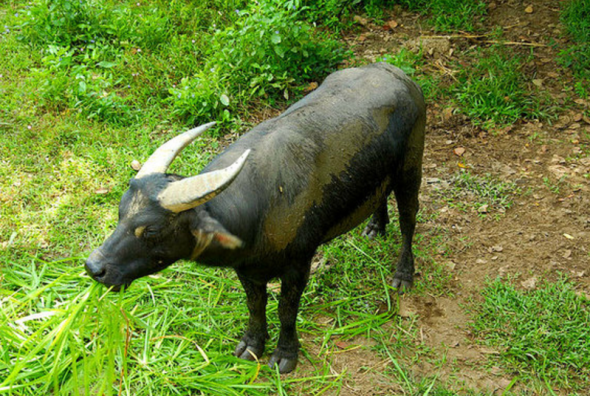
Endangered Species Friday | Bubalus mindorensis
This Friday’s (ESP) Endangered Species Post, I’m touching on a very undocumented species of buffalo that is so endangered - its extremely likely the species will go extinct within the next ten years maximum. (Photographer unidentified).
Listed as (critically endangered) the species was primarily identified back in 1888 by French born Dr Pierre Marie Heude (25 June 1836 – 3 January 1902) whom was a French Jesuit missionary and zoologist. Born at Fougères in the Department of Ille-et-Vilaine, Heude became a Jesuit in 1856 and was ordained to the priesthood in 1867. He went to China in 1868. During the following years, he devoted all his time and energy to the studies of the natural history of Eastern Asia, traveling widely in China and other parts of Eastern Asia.
Endemic to the Philippines B. mindorensis first came to the attention of environmentalists when conservationists began studying the Mindoro Water Buffalo in the early 1940’s of which they found insufficient data relating to the species. Unfortunately from 1986-1996 the species was then suddenly re-listed as (endangered).
Yet the Tamaraw had been known to overseas and native conservation scientists for over THIRTY YEARS of which today we’re now seeing a possible new extinction occurring within the Philippines. How is this possible, when scientists knew about the status of the species, why hasn’t a single zoo removed small populations to house in protective breeding captivity for later reintroduction into the same habitat, or new pastures?
Meanwhile from the year 2000 to 2008 the species was again (re-listed from endangered to critically endangered). Today the Tamaraw is now bordering complete extinction within the wild, and from what we know there is ‘possibly’ no protective captivity projects anywhere around the globe to preserve the species for future reintroduction in the wild. We do hope that we’re wrong?
From what we know based on the last census from 2013 (three years ago) there was noted within the wild only 105 mature individuals remaining. This equates to exactly 105-210 mature individuals (estimate). Within the past three years its very likely we have probably lost half of the remaining populations known, which could mean there is only 52-205 mature individuals remaining within the wild to date.
The species is not known to be fragmented, however populations are still declining. The major threat was once identified as hunting, although ‘allegedly’ isn’t known to be a threat now?. As a scientist and environmental crime CEO I find this very difficult to comprehend, due to the amount of horned ungulates which are being located throughout South East Asia. I must state though: my environmental crimes officers as yet haven’t located any Tamaraw horns or trophy heads.

Image: Tamaraw. Credits: Ruisu Fang.
Formerly, Tamaraw were found across the whole of Mindoro from sea level to the high peaks (to over 1,800 m), inhabiting open grassland or forest glades, thick bamboo-jungle, marshy river valleys, and low to mid-elevation forests. The species is currently confined to a few remote areas over 200 m, and is most often recorded in secondary forest and mixed forest/grassland.
Tamaraw are largely solitary, although females occur with offspring. Males and females occasionally associate temporarily throughout the year, which is similar to other bovines species, such as African buffalo, banteng and gaur. The solitary nature of the species is probably an adaptation to forest habitats, where large groups would prove to be a hindrance. Tamaraw feed primarily on grasses, as well as young bamboo shoots, in open grasslands, resting within tall grasses or dense forest. Although formerly diurnal, Tamaraw have become largely nocturnal due to human encroachment and disturbance.
“WE’RE LOSING THEM, AND FAST”
I do find it quite disheartening to know that the Philippines “national animal symbol” isn’t really being preserved or even protected from nearing complete extinction, although there are some projects out there that are helping to save the species from extinction, the problem is of course, as usual, funding!. One would think that a country that’s so wealthy, and a country that has introduced so many animal, wildlife and environmental laws would at least be fighting to protect the tamaraw. From what I have read and heard from the locals - they are trying their utmost hardest, unfortunately not everyone thinks the same as many kind Filipinos.
THREATS
The main current threat to the Tamaraw is habitat loss due to farming by resettled and local people, with a high human population growth rates in and around its remaining habitat. In some areas, fires set for agriculture are a threat to the species’ habitat. Cattle ranching and farming activities pose a number of threats, including the risk of diseases spreading to the Tamaraw from livestock and burning of pastures leading to a reduced number of palatable grass species.
Historically, Tamaraw were hunted for both subsistence and sport, which led to a period of drastic decline in numbers of individuals and populations. Hunting was carefully regulated prior to World War II, but since then a growing human population, logging operations, ranching, and widespread availability of firearms on Mindoro have caused a dramatic decline in numbers.
Since the 1980s, sport hunting has reduced due to a decline in the Tamaraw population, closure of nearby ranches, and more intensive patrolling and awareness activities since the establishment of the protected area. International trade in this species or its derivatives has not been reported. Although protected by law, the illegal capture and killing of this species continues.
While its currently “illegal to poach or hunt” the species “we believe some are still being poached within the Philippines to provide horns to both China and Viet Nam”. As yet there is NO EVIDENCE to back these claims up, however I.A.R.F.A environmental crimes officers have located in Viet Nam a lot of ‘counterfeit Rhinoceros horn’, which when analysed, has proven to us the horn[s] most certainly aren’t from rhinos, but from a buffalo species. So this area of the counterfeit rhino horn trade still needs intensive investigation.
The current plight of the tamaraw is not looking good, and from our own investigations and third party environmental investigations relating to the species - extinction is very likely to occur in around five to ten years (if that).
“THE TAMARAW IS ASIA’S NEXT EXTINCTION”
Thank you for reading.
Dr Jose Carlos Depre. PhD. MEnvSc. BSc(Hons) Botany, PhD(NeuroSci) D.V.M.
Environmental, Botanical & Human Scientist.
FACEBOOK: TIGER PARTS TRADE | HORROR IN VIET NAM | PART II
TIGER TRADE | VIET NAM
The images your about to view in this article have all originated from an ongoing investigation into the illicit animal parts trade online and on the ground in South East Asia. My name is Dr Jose C. Depre, for some five years now my environmental and animal crimes investigation company has continued to delve deeper and deeper into the murky world of the illegal animals parts trade. (Image: IARFA Evidence image Tiger pelt, Thái Hõa, Nghệ An, Viet Nam)
Back in January of 2015 we began the forth phase of #OperationTrojanHorse focusing our attention mainly on Viet Nam, the operation that was launched is #OperationStopIt. Operation Stop It is fronted by numerous men and women from all over the globe that operate under myself the Chief Environmental Officer. We run two units that focus on ground level wildlife crime, and online wildlife crime. We’ve been investigating wildlife crime now since 2000 focusing on the bush meat trade, deforestation, chemical, and animal parts trade (among others).
Since June of 2015 when we began noticing a large number of traders dealing in tiger bone glue (alleged to be mostly fake), tiger claws and teeth, with various pelts and skulls. I then asked three wildlife trade investigators to work alongside me to dig deep into the murky world of the tiger parts trade. This area of the investigation focuses specifically on the ground and online trade of tiger parts. However we’re now looking into the online Facebook trade, an investigation that is uncovering “worrying evidence and corruption at governmental, police and zoo level”.
Its estimated (Cites and Traffic 2014) that there are some 6,100 “captive bred tigers” in Viet Nam, Laos, China and Thailand, furthermore since 1991-1993 the tiger trade has been officially banned within Viet Nam, unfortunately as one can see within the images herein, the trade still continues, although we “suspect these tigers are mostly captive”. Back in 1975 tigers were listed on Cites Appendix 1 (meaning that all trade in tigers domestically and internationally is now banned).
The problem we are currently finding within Viet Nam, as well as the loopholes within the current Cites laws, is that pretty much anyone in Viet Nam can apply for a permit to house tigers, so as long as them tigers are used for “conservation efforts only”. Cites laws do state that under no circumstances must any captive bred/reared tiger be killed or any part of any tiger used for trade.
However we must also remember that Cites is not a law agency, but more an organisation of parties from around the world that sets out laws; from there its down to that individual countries “policing agencies and that specific Cites department (in this case Cites Viet Nam)” to ensure laws are enforced. External Affairs Environmental Crimes Officers have though located numerous “corrupt Cites Viet Nam officers” of which I will be writing about soon.
As explained in (Article 1 - Facebook and the ivory trade); Facebook has become quite an easy platform for just about anyone to trade whatever they like (legally and illegally). Sadly in this case since June 2015 on-wards IARFA Environmental Crimes Officers have located staggering amounts of tigers and wildcat trade on the United States Facebook platform - all of which is 100% illegal, little of which from what we are locating is even under investigation from local and/or international trafficking and trade agencies.
The images below form part of a Vietnamese nation wide investigation that has uncovered corruption at Cites level, evidence that proves zoos are providing smugglers and traders with tiger and wild cat cubs and parts, and what we suspect is a legal trade of tigers from Africa into Viet Nam from which them tigers (bred in South Africa) “we suspect” are being used to fuel the massive tiger parts trade in Viet Nam. I will be documenting more on the “African connection later in the year”.
Image: Vietnamese trader calls posts freshly killed tigers with price. Buyer must collect.
The image at the top of this article depicting the tiger pelt rug is from the same individual in Thai Hoa, Nghe An, Viet Nam. He states in the Facebook posting “now ready to collect”. On viewing the messages underneath its quite clear that a price was already arranged privately within private Facebook messages, again no images of the traders face is available, nor any other identification as to what the name of this individual is. This is though normal, most traders operating illegally online or at ground go under various aliases, and rarely show their face, or use their real name. The trade is so secret locating tiger traders is actually considered rare, although once you uncover a large number of networks, follow them traces you do eventually locate numerous individuals trading in secret.
Image: Same trader, same tiger, all traded illegally on Facebook.
While Facebook has suggested they may be implementing new terms and applications to immediately ban such traders from their platform, we highly doubt whatever changes they do make will make any difference. For example users have the opportunity to create “secret Facebook buy and sell groups” or just “non-buy and sell Facebook groups”.
Once the group is set to private, only those within that group are able to report to Facebook or notify the police. So its a case of us then using our brains, technology and other applications to find these individuals. Once located all data is collected and then passed on. We don’t continue to monitor the groups or afterwards, as that is no longer our job. We’re not paid to police the web, or asked to. We do it though to help enforcement agencies, and to break the back of wildlife criminals.
We (the organisation) do highly suggest that you notify ourselves or the local police before Facebook so that evidence can be obtained before the account is “suspended” and not terminated. Once the account is suspended we, or any enforcement agency can then apply for a court order to seize any remaining evidence. Facebook hosts over 1.32 (billion) users and growing, so we find it highly unlikely any application implemented by Facebook is going to have much effect to those illegally trading animal parts. We’re talking about a platform that hosts 1% of the globes population! Hardly easy to police.
Image: Tiger trader shows one of any carcasses to buyers, Viet Nam.
Viet Nam banned hunting of tigers back in the 1970’s; had they not banned hunting (aka poaching), all of Viet Nam’s tigers would now be extinct. Today there is a total of 30 Vietnamese critically endangered tigers remaining in the wild of Viet Nam that are literally on a life thread. So with hunting banned, and trade of tigers and their derivatives banned has it stopped the tiger trade? Unfortunately no, and its very unlikely we’ll see the trade stopped until everyone pulls together and works together to stop wildlife crime dead in its tracks, easier said than done though!
Image: Vietnamese trader opens freezer up to reveal more horrors.
Image: Asiatic leopard we “suspect has been removed from a zoo and killed”.
The image above does raise some concerns as to where exactly this individual obtained this Asiatic leopard from. Asian leopards are not common within Viet Nam, although they do allegedly exist (in the country which I highly doubt). This is the first time we’ve come across an Asian leopard of which are considered “extremely rare” within Asia. We do suspect that the leopard may have originated from a nearby zoo, or the animal has been killed further east outside of Viet Nam, then smuggled into Viet Nam. The trader again states that the carcasses are ready to pick up, a price has obviously been made within a private communication which we can see in the comments section. This leopard may have originated from South Africa as a cub, if proven to be true it yet again blows a large hole in the so called “petting and breeding trade in South Africa”.
Image: Poached clouded leopards for sale on Facebook in Viet Nam.
IARFA Environmental Wildlife Crime Officers have been locating a large number of clouded leopard cubs for sale on Facebook. Most of which are dead, or normally its the skins that are traded. Both species in the genera of clouded leopards are considered “threatened” and nearing extinction within a number of Asian countries. Its unsure what these small cats will be used for, however back in December 2015 we located smaller tiger and leopard cubs that were being mixed with whole Asian and African pangolins. They were placed into what we now know was a type of Asian marinade, prepared and cooked some days later.
Image: Young tiger cub, seems to have been rolled up into bag then transported.
The evidence above was located by Environmental Cyber Crimes Officers from the IARFA. This particular trader has shot up on our radar because he has direct connections to (an unidentified South African game breeder and hunter). The Viet Nam citizen that we cannot name for enforcement reasons only recently visited South Africa to hunt a lion. Furthermore not only did the individual bring back with him a lion skin (pictured below), he also flew back from South Africa with a large number of lion bones. Again why was he allowed to leave South Africa with them bones for, and how on earth did he smuggle them out of South Africa, which its believed not to be a criminal activity.
Image: The Vietnamese trader recently visited South Africa to hunt a lion.
Image: Same trader found trading pangolin scales in the same secret Facebook group in Viet Nam.
IARFA Environmental Crimes Officers have been following this traders movements for some weeks now, although this week was when we eventually located yet more evidence of his seedy criminal network involving big cats. The Facebook group that specializes specifically in trading “tiger parts” also trades a very large number of tiger claws, tiger teeth, tiger skulls, tiger testicles, and tiger pelts. The image below depicts what were up against.
Image: Secret Facebook buy and sell groups protect Asian traders (so they believe).
The image above is just one of five images out of a staggering 14,562 images all depicting tiger traders, bear part traders, rhino horn and ivory traders and finally pangolin traders. In total there is just in this group alone a staggering 8,000+ individuals ranging mostly from Viet Nam, South Korea, China, Thailand and Laos. The Facebook group was established some 2-3 years ago from what we have seen.
Furthermore while we’d really love to report this group and have it shut down, its not that simple. Within this group alone contains evidence of wildlife trade that spans the globe from Asia to Africa, and Europe to America. One user only has to log into this group of which they are then in touch with a highly active, and sophisticated network of traders operating locally and internationally. Now do you see what we’re up against? I the CEO have long suspected since early 2006 that trade patterns were either changing, or poaching was indeed decreasing to some levels. On my travels to South East Asia I had noticed that there were fewer and fewer traders operating on ground level.
Yet poaching rates of tigers, elephants, pangolins Etc was still increasing with some reports of poaching decreasing. Many NGO’s pointed out they were winning the war on poaching, yet couldn’t explain why populations of many “trade animals” were not increasing within their endemic wild. Well here is just a small snippet of that change in trade patterns, poaching is most certainly still ongoing, and increasing, trade is still increasing furthermore - and under no circumstances are we winning the war on poaching locally and internationally. Why? We’re not winning it because technology has mostly played a pivotal role in now concealing trades and traders I.e online.
To date we have located exactly 203 active illegal wildlife groups online (in Viet Nam alone), some of them groups have direct connections to what was once “large wildlife trade markets at ground level”, in a sense what were seeing here is alike to the change in industrial markets in the west. They (the traders) now find it more easier and cheaper to trade goods online, and this is what we are seeing in Asia, with very little in the way of enforcement or monitoring. Facebook has become the new hotbed wildlife trade market place, its big and growing by the week. Furthermore most of these traders are using fake names, and code words to conceal their tracks and trade.
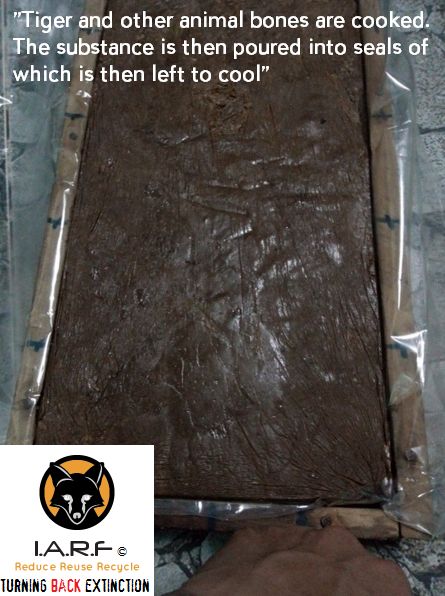
Image: Tiger bone glue, please click on the link in the image for information.
Tiger bone glue was said to be the most expensive wildlife product on the black market. Mixed with a wide number of synthetic drugs to cure so called illnesses and to act as a narcotic, environmentalists did state the glue is now mostly fake and hard to obtain due to the decreasing tiger numbers in the wild. Unfortunately with so many tigers still being bred in captivity within Asia - tiger bone glue is still available, priced higher than rhino horn and ivory.
The tiger trade is unique when compared to the illegal trade of other wildlife in Viet Nam, due to the relative rarity and high value of the commodity. This often results in traders taking extra measures to assure secrecy in their dealings (although that is something to be seen on Facebook). Viet Nam’s illicit tiger trade is carried out by elaborate criminal networks that avoid detection through the use of disposable cell phones, connections across international borders, and using friends in high places to facilitate a smooth and steady flow of their product to the consumer.
Most tigers confiscated in Viet Nam originate from foreign sources, smuggled into Viet Nam from Laos and Thailand where major farming operations exist that both produce and launder animals from the wild. A number of key figures behind the tiger trade in Viet Nam have been identified but manage to avoid prosecution by distancing themselves from criminal activities or operating under protection of local officials. Prosecutions tend to target low-level figures involved in transport or brokering sales. Only a minute few of these prosecutions result in prison time for anyone involved. (Source ENV Viet Nam).
While we would like to believe that most tigers are originating from over the borders there is also as explained zoos that are not being monitored, are breeding tigers, then selling them tigers onto traders. Finally we also have what we suspect is a number of African petting and breeding farmers involved in this trade that continues to flout legal loopholes in the law.
The wildlife trade on Facebook must come to an end. Please sign the petition hereto:
http://www.thepetitionsite.com/645/521/701/facebook-remove-illegal-pet-and-wildlife-traders-from-your-server/
Thank you for reading.
Dr Jose C. Depre
Chief Environmental Officer.
Illegal Wildlife Trade | Investigative Report | Viet Nam & Thailand.
ILLEGAL WILDLIFE TRADE IS BOOMING
WARNING - THE FOLLOWING INVESTIGATIVE REPORT IS GRAPHIC
Investigative report written by: Dr Jose C. Depre.
International Animal Rescue Foundation Africa and her External Affairs Environmental Investigations Department commonly known as the (EAD), have for the past year been warning police agencies, and Interpol internationally and locally to tighten the grasp on the black market illegal wildlife traders, after a sudden spike was witnessed by us in trade emerging from Thailand and Vietnam (2013-2014)? IARFA’s External Affairs operations unit were somewhat suspicious as to why so many rhino and elephants were being poached, yet very little in the way of fresh animal parts I.e rhino horn and elephant tusk were being seen on the ground.
Back in 2014 the BBC reported that rhino horn and ivory in Viet Nam and China had heavily decreased (or was becoming more difficult to obtain), we disagree with the BBC’s 2014 documentary and have shown the evidence below to prove that trade is more than active in Viet Nam, with Thailand now the new rhino horn hub. We’re unsure as to what has caused this sudden increase of illegal trade and poaching in Africa and Asia, and the skyrocketing demand online, primarily on the United States social media platform identified as Facebook. What investigators located in the past year has shocked us, and has led to a multinational investigation spanning over 19 countries, resulting in IARFA’s biggest wildlife crimes investigation to date.
(NB: The following evidence depicted herein is of a graphic nature and viewer discretion is strictly advised).
A further concern was the sheer fact that rhino horn was becoming more difficult to locate on the streets of Viet Nam, which was also highlighted in the video below via the BBC (2014), yet rhinos are being slaughtered at some 5-7 a day on the African continent, primarily in South Africa. So we sent in our team of investigative officers to track down where we believed rhino horn and wildlife syndicates and traders were now in operation. The shocking evidence below proves what we believed all along. Thailand has become a hot bed for illegal rhino horn trade, and Facebook has yet again exploded with online illegal wildlife ‘profile shops’ and pet trade that criminals hide behind to peddle their trade on a grande scale.
Back in 2012 the External Affairs Department recruited a further twelve investigative volunteers due to worrying trade increases of mainly ivory, rhino horn and endangered tropical pets that were being sold at ground level, and on Facebook. Furthermore the (EAD) increased its online presence in relation to cyber crime projects run by Operation Trojan Horse founded in 2008 after it became apparent teenagers as young as 16 were illegally peddling animal parts and endangered tropical pets via their Facebook social media profiles.
While the (EAD) and her counterparts from the Operation Trojan Horse Online Surveillance Unit have been successful in locating and closing down illegal wildlife and pet traders (with arrests and seizures being made). Very little in the way of a decrease of demand and trade is being noted. Countless complaints to the United States Facebook platform with petition, hasn’t been successful either. Despite the fact illegal wildlife trade ranks as the worlds 4th largest illegal trade funding terrorism, narcotics, prostitution and child trafficking.
Over the past 365 days the External Affairs Department have been monitoring unusual peaks of the trade in rhino horn, ivory and tiger parts within Viet Nam, Thailand and Japan, with much online chatter from traders in Benin, Cameroon, South Africa and Namibia to Asian citizens peddling animal parts. Two individuals (pictured below) we’ve been wanting to catch up with now for over six months, after the duo skipped a meeting with two of our EAD officers in Thailand regarding the sale of rhino horn.
Its unsure if the two knew we were onto them, or they simply missed the meeting for unknown reasons. Either way and with a stroke of luck after data obtained from a bush meat trader in Cameroon we managed to catch up with our fiends again. This time the evidence we hold on them is so large it spans from Asia directly into Africa. From the 23rd December 2015 investigative officers from the EAD’s (Cyber Crime Unit) then moved into quickly obtain evidence to pass onto Interpol. From the 29th December 2015 (17:00hrs) we can now confirm the following evidence herein has prompted Interpol to now launch an ‘urgent investigation’ into serious wildlife crime spanning from Asia to Africa.
Had the meeting gone ahead back in June 2015 it would have led us ‘directly’ onto a more larger wildlife trading syndicate that we’ve been monitoring within Beijing, China since 2014, identified as Mr Ji Lu or Ken as he calls himself. Unfortunately the trail went dead, both the two young men and Mr Ji Lu vanished off the External Affairs radar. Then the EAD struck gold last week before Christmas after a random trace of a Cameroon bush meat poacher in Africa. We’ve long known that African bush meat poachers and traders communicate to Asian wildlife traders and syndicates either online in private chat forums, or via stolen cell phones. This time we had our men, more than enough evidence to launch a multinational investigation and further information that has led us onto newer more sophisticated traders.
“Thailand is the new hotbed for rhino horn trade”
However never did the EAD or ourselves believe we’d again come face to face with some of the most evil and sadistic animal parts traders we’ve ever encountered. If the images and evidence below is not enough to shock the Thai and Vietnamese Police into now acting, then we don’t know what is. The following evidence in image format below is shocking and may upset some of our readers.
However its no shock to us of which we have for the first time decided to show to over 7.8 million supporters exactly what we and other wildlife agencies are up against. Teenagers and young men and women from the ages of 16-20+ are trading anything from bear bile, real rhino horn, ivory, down to gorilla’s (all of which is strictly 100% illegal).
The two men above aged between 19-25 years of age we’re keen to catch up with again for their involvement in the brutal breeding and killing of innocent tigers for the bone wine trade. Furthermore the two individuals are also wanted for questioning for their involvement in the dealing and illegal possession of rhino horn and Elephant ivory. On conducting a random online trace the two men and possibly a female are believed to be using a pseudo Facebook profile that goes under the name of ‘White Tiger’ that has been set up as a female account. We believe we know whom the woman is, however as yet we haven’t 100% firm evidence to prove this is our woman from Japan.
(NB: Please note we cannot publish the identities of the two men and woman for legal reasons)
Its suspected that the woman’s name whom we believe is related to the two men above is Mme Phuong ***** whom possibly originates from Hanoi, Viet Nam, however we also believe that she goes under the name of Mme Chung. A further alias the female account uses on Facebook (not related to Mrs Chung) is identified as Cọp ******. The city that the two males and female accomplice frequents is identified as Phatthalung, Thailand. The home town of the Facebook account from which the female is ‘alleged to be residing within’ has been identified as Bang Kongra, Phatthalung, Thailand.
Furthermore a trace of the ‘accounts working address’ showed up as Bangkok ( กรุงเทพมหานคร ), which is a tourist company ferrying foreign and local tourists around Thailand. We have reason to believe that the female account possibly belongs to a Japanese woman that we have been following all over Australasia, who now runs an immigration agency on Facebook. However it must be noted that Mme Chung and Cop ***** are two different women. Confusing we know, we know though that both women and the men involved in this report are using 2-3 Facebook accounts and communicating in various chatter forums online!
The two men and one woman have for the past year been heavily dealing in rhino horn, ivory, and tigers that are brutally killed to produce an alleged medicinal wine (as seen above), rhino horn down to bear bile, narcotics (possibly heroin/hash (see image below)), and what appears to be counterfeit illegal cigarettes. The 1970/1990 and 2009 domestic and international rhino horn trade ban prohibits anyone from trading in rhino horn.
Meanwhile the 1989 ivory trade ban prohibits anyone from trading un-permitted ivory and ivory parts. Furthermore its a criminal offence (internationally and locally) to trade in anyone of the endangered species being that of pangolins and tigers. International Animal Rescue Foundation Asia successfully identified the many pangolin’s viewed for trade as the Manis culionensis or the (Philippine Pangolin). Hence why we had to move quickly to communicate all evidence to Interpol.

Illegal wildlife traders: Viet Nam & Thailand. Tiger cub was beaten over the head with Asian pangolins for the production of tiger and pangolin wine.
Back in June the External Affairs unit contacted the two men who’s names we’ve withheld in the hope to set up a deal to purchase rhino horn. Only one horn was available to purchase priced at $35,000 Vietnamese Dollars per/kilo. The horn had already been inspected by our Singapore counterpart that works closely within the trade circle.
The EAD officers then went ahead for the meeting of which as explained the two individuals didn’t turn up. Fortunately as explained we’ve managed to locate the two individuals again, this time though as you can see above and below, the two (possibly three individuals) have been rather busy since June 2015 (and way before they even cropped up on our radar). Some of the rhino horns can be viewed below along with ivory that is most certainly not permitted to be in the hands of these young men and women.
On locating further evidence that we required to instigate a multinational investigation we then again at 09:25am on the 23rd December 2015 and 29th December with a further communication on the 30th December 2015 communicated all (cyber evidence) and data to the Environmental Investigations Unit of Interpol via secure encryption. (Please note that are unable to provide all evidence onto this platform as it could/will impede on the investigation that is currently now ‘active’.
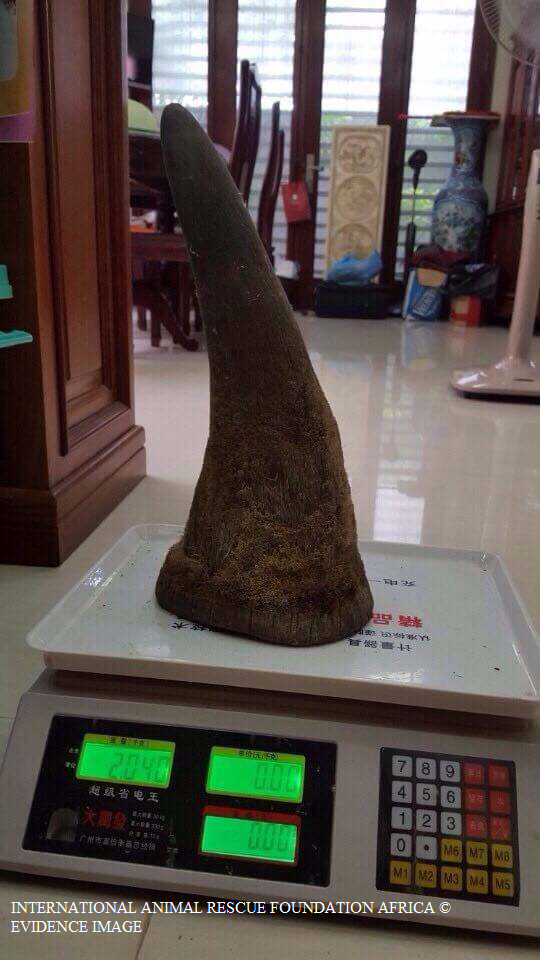
Trader weighs up a mature African rhino horn in back room. Total number of horns are worth in excess of 6 million euros.
Ivory trade was officially banned internationally back in 1989, however it hasn’t stopped these two rather sadistic and ruthless criminals from going about their trade bringing in millions of Vietnamese and Thailand dollars, most of which is traded on the US Facebook social media platform.
Furthermore it explains now where the vast majority of ivory and rhino horn is being traded. Viet Nam was virtually declared a no-rhino horn country by the BBC and the WWF back in 2014 as explained above. Unfortunately had the two investigations units bothered to look a little closer they’d have not only noticed our own concerns (with evidence being shown), but also many private online forums (including Facebook) booming in animal parts trade.
Below are numerous pieces of ivory all of which are not permitted. Investigate officers casually asked within the online chat forum if the ivory below was permitted, the [unnamed trader/peddler] was very forthcoming with his reply stating; “No, none of the ivory here is permitted”, meaning its 100% illegal to own/trade.
On immediately being made aware that the ivory was not permitted we knew instantly that these three individuals were not your average wildlife traders or syndicates. Furthermore on tracing the individuals Facebook profiles we were yet again (as explained) made aware of a female ivory trader that has been visiting Australia and Japan for unknown reasons while trading ivory online. Mrs Chung as we know her we’ve already informed the Australian Federal Police and TRAFFIC about.
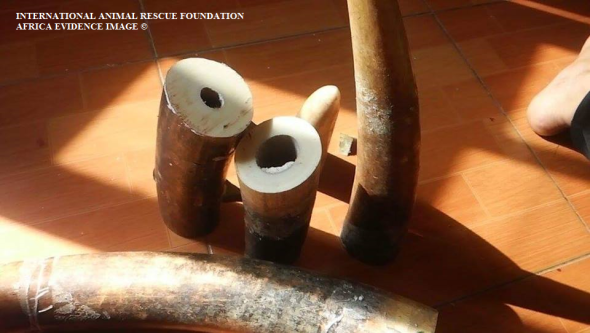
Female trader with male brags to investigative officer how ivory is easily obtainable from Benin via France.
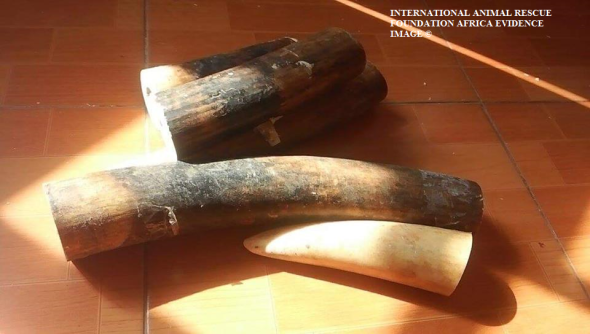
Trader informs investigate officer that ivory can be shipped into any county in the form of small firewood blocks.
The images above are just a small handful of evidence shots obtained from both the Vietnamese and Thai traders that had no worries whatsoever on displaying these items either to our investigative officers, or trading online via secure trading chatter rooms. These chatter room’s are mainly frequented by medicine men and women, and general traders of antique and non-permitted animal parts, all of which anyone can enter on Google using a simple VPN tool.
While ivory trade is not necessarily a big secret within Thailand, the sheer fact that younger people are able to obtain ivory and rhino horn in such mass quantities is extremely concerning. We also have reason to believe that some of the ivory is deriving from passages via Benin and possibly Cameroon on the continent of Africa. Our enquirers in relation to the African trail of ivory into Asia began with Mr Chan**** ***** who states he works for the Homme D’Affaire International which we believe is a made up organisation.
Chan**** *** runs a bush meat shop within Cameroon selling anything from pangolins to endangered turtles, masks and cars, and coincidentally his shop is also operational on Facebook. Had Mr Chan**** *** not bragged about ivory making its way from Benin into Vietnam we’d never have caught up again with our Asian fiends. Some of the images from Ch**** *** bush meat shop of horrors can be viewed below.
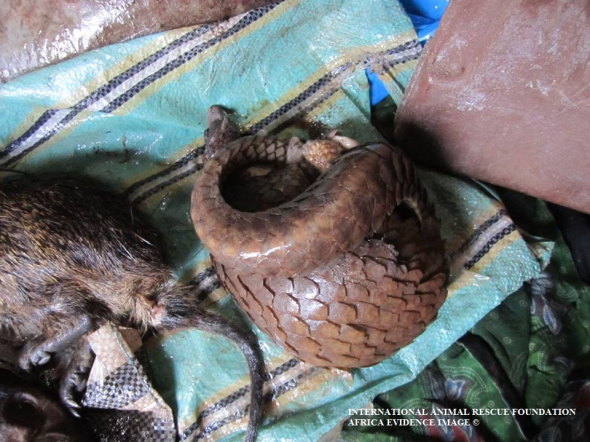
Investigators identified two species of pangolin. Both tie into the Asian and African wildlife traders.
E.A.D officers investigated the trade between the two African and Asiatic pangolins, above is that of an African pangolin which was the same species seen within the apartment of the Vietnamese citizen that offered our Singapore investigative officer rhino horn. So we’re 99% positive that all three Asian citizens have more than your normal ties to the African bush meat poacher whom we know is using a trade route from both Benin and Cameroon, onto Europe and into Asia. The African pangolin 1 of 3 identified in the apartment in Vietnam can be seen below.
African and Asian pangolins are fast becoming rare with the vast majority of Asiatic pangolins now nearing extinction. Pangolins are used within the Asian and African (TCM) Traditional Chinese Medicine trade. Furthermore the scales of the pangolins are used to make jewelry or coats. The meat of pangolins is considered a delicacy. Every year we loose more and more pangolins to poaching, and while the Asian pangolin continues to decrease in population size, the African pangolin will be placed more at risk furthermore.
Investigators were more shocked at the sheer fact that three young adults were able to obtain large quantities of illegal and legal wildlife products then freely trade them on the streets or upon their personal Facebook profile shop forums. The images below depicts large quantities of tiger teeth, bear paws, shark fin and what we believe to be tiger testicles.
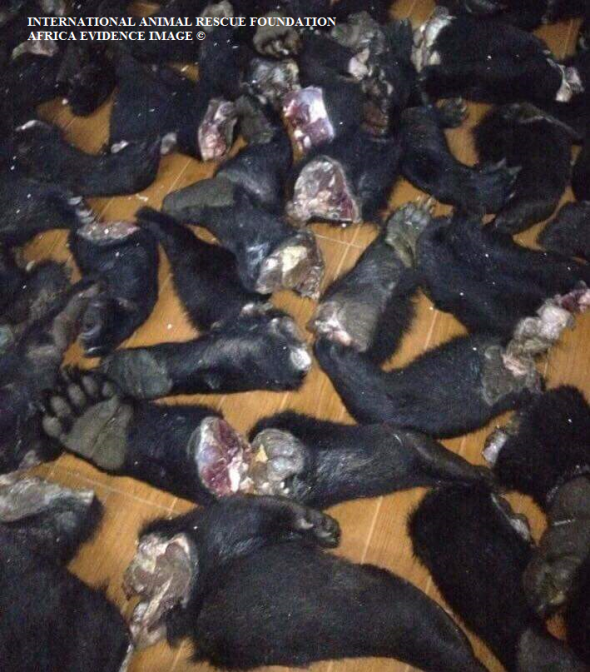
Thai and Vietnam traders offered investigators bear paw, that is used to create a fake medicine soup.
The following images below are from tigers that our International Animal Rescue Foundation Asian unit have successfully identified as Sumatran tigers listed as critically endangered on the IUCN - International Union for the Conservation of Nature’s Red List.
Please note you may find some of the images below disturbing and emotionally upsetting.
Investigative officers were told that tigers are bred within small enclosures within the family home. From there the young cubs are then killed with the adults soon after. There body parts are either stored in a freezer whole, or decapitated. On mentioning tiger skins the EAD officers were informed that some of the tigers are skinned of which their pelts can fetch anything in the region of $5,000 to $10,000 USD. Needless to say we were mortified and shocked at the traders openness and complete disregard to the fact tigers are nearing extinction within the wild.
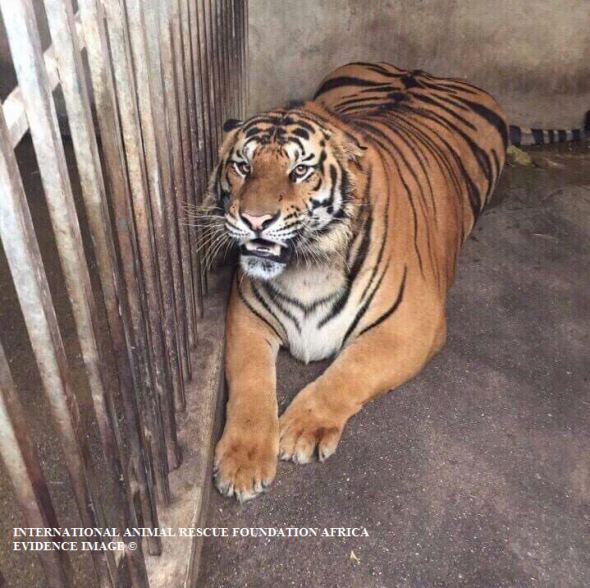
One of nine tigers that both the Thai and Vietnamese traders keep as pets. Sadly to later breed and kill for parts.
The tiger pictured above was being kept as a pet in a dark barred cage in Thailand, Bangkok. We personally believe that the three traders we’ve been monitoring since June 2015 have traded more than nine tigers (if not more). Based on the number of tiger teeth and claws we’ve estimated a probable 20-30 tigers have unfortunately met a rather gruesome and barbaric death, the sheer number of skulls, pelts, teeth, claws and tiger male testicles shows these traders are more than professional. The following images below may be upsetting to some viewers.
Despite the best attempts of law enforcement around the globe, CITES and national NGO’s pushing for stronger laws internationally and locally very little in demand and trade is being seen relating to tigers. A six month investigation of illicit wildlife trade has shown to us that trade is becoming more widespread, younger people are more involved rather than the elder generation. Regardless of education and awareness in schools the E.A.D are now picking up on average a total of 3-4 teenage dealers weekly. Many of them have ties to African bush meat traders too.
As previously explained Asiatic pangolins are nearing extinction, yet despite the amount of seizures being made, little in the way of a decrease in trade is being witnessed. Furthermore as Asian pangolin populations decreases, African pangolins will be poached to continue the trade and demand of pangolin meat, scales and medicine. None of which has any medicinal value whatsoever.
The images below were what prompted E.A.D investigative officers to then look further afield, taking the team from Thailand and Viet Nam to Africa.
From 2010 the External Affairs Department have noticed a staggering increase of tiger teeth and claws on sale via the Social Media platform identified as Facebook. There are two different types of trade. 1. Counterfeit trade which is primarily wooden carved tiger teeth and claws and 2. Real tiger teeth and claws. Like all of the evidence above and below obtained by the EAD’s Operation Trojan Horse officers, every part of the tiger is used for illegal trade.
Tiger teeth and claw necklaces are worn in Asia in the belief that such animal parts will bring the wearer power, good-luck, and ferocity. Many of the traders that we investigate often tell us that they have either found tiger teeth and claws on the ground in forests, purchased antique tiger teeth and claws from dealers. Or in this case have illegally harvested the tiger teeth and claws from home-captive bred tigers seen in the images below. The images below form part of the evidence files on the three individuals spanning from Thailand to Viet Nam.
(Please be warned the following images may be upsetting to some viewers).
Below are step by step guides that the Vietnamese trader bragged to E.A.D officers on how to harvest tiger teeth and claws. The images are upsetting and also include the skinning of tigers.
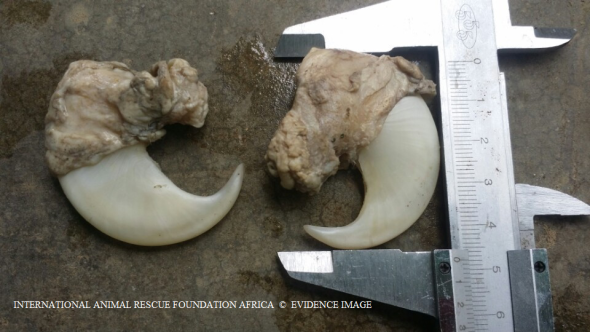
Tiger claws are measured like rhino horn and ivory. This process helps traders to price up and show legitimacy to buyers.
E.A.D officers are (as explained) unsure on the exact number of tigers that these individuals in question are breeding and trading within the home and other premises. From the evidence obtained the number of teeth and claws points to at least 20-30 tigers bred, killed and processed in Thailand and Viet Nam. An unidentified trader who’s name we cannot make public proudly shows on their Facebook page how easy it is to skin a tiger (images seen below).
Tiger testicles are also used within the Traditional Chinese Medicine trade, however this is the first time we ourselves have actually come across such tiger testicle trade (normally one views tiger penis on sale real and counterfeit). The trader[s] we’ve been investigating boasted within an online forum how tiger testicles are now more popular than tiger penis itself.
The image below shows the trader boasting how large the male tiger testicles are before he then sets about to remove, bag and weigh up the testicles for sale. Its believed the testicles ‘may’ be transported illegally into China or onto wealthy Viet Nam/Chinese restaurants where the soup of tiger testicles is ‘allegedly’ known as a delicacy and (aphrodisiac soup). None of which holds any medicinal evidence whatsoever.
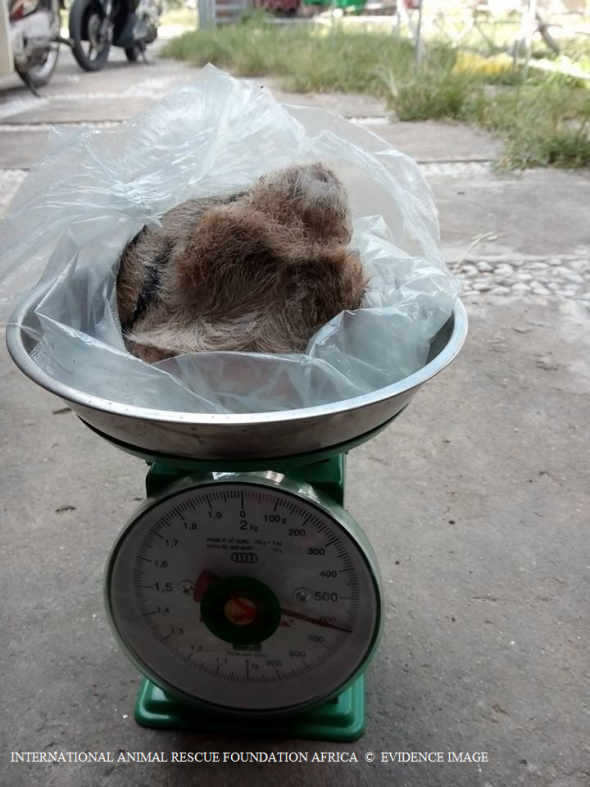
Tiger (testicles) weighed for sale. The testicles will most likely be used to produce tiger testicle soup.
Back in 2013 the Humane Society of the United States stated a total of twenty seven countries had outlawed the sale and trade of shark-fin for the production of shark-fin soup. One would then be led to believe that since this mass outlawing and bans on trade, it would therefore heavily restrict shark poaching and trade of shark-fin soup. In Thailand and Viet Nam it appears not to be the case (both countries have no bans in place).
Unfortunately when E.A.D officers investigated the traders herein this article, we uncovered more than enough shark-fin trade to prove that neither laws or outlawing of the trade is having any real effect on stopping or restricting the trade of shark-fin. On speaking to the unnamed trader within a forum online for TCM trade, the individual boasted how easy it was to obtain shark fin, an transport that into Asian and North American countries. The images below show shark-fins drying at the traders apartment in Thailand and Vietnam.
International Animal Rescue Foundation Africa and two investigation units aligned with us; External Affairs Unit and Operation Trojan Horse (Cyber Crimes Division) have been tracking countless illegal wildlife traders all over the world since IARFA established the (Cyber Crimes Unit). While the evidence above may shock many, its little compared to what we locate every month. Investigative officers work under immense pressure, stress and must work fast to ensure that traders once located are reported to the relevant agencies.
On the 23rd December 2015 Interpol’s Environmental Crime Unit and the Cyber Crimes Serious Investigation Team were alerted to our findings, while we can state now that our investigation which we have decided to make public has shown much data on trade. The investigation is considered normal due to the size. The most shocking aspect of this investigation was the fact that our younger generation are more active now within this illicit trade. That in itself poses some rather large problems and concerns, and one that now needs addressing at both government and educational level.
As of today 29th December 2015 this investigation has since been increased to “extremely urgent”, and the need to locate these men and women is critical before any further animals die, in Asia and Africa. All three individuals have shown a complete disregard to the fact rhino’s, elephants and tiger populations are losing ground throughout the Asian and African continent. Sharks and pangolins are also nearing extinction too. Trade and demand as explained has skyrocketed online to worrying levels, yet slowly vanishing on the ground.
Thailand is the new hub for rhino horn trade and Facebook and other social media platforms are being exploited to trade just about anything wildlife, regardless of such products being illegal. Trade and demand on the ground has also changed from elder to younger individuals (as explained) which is very worrying. One of the largest trading countries that we are seeing to date, is that of Thailand, which would explain why the BBC back in 2014 couldn’t locate much in the way of rhino horn (in Viet Nam).
Since General Prayut Chan-o-cha took over running of Thailand back in 2014 wildlife trade has skyrocketed. While we cannot prove increasing trade has anything to do with General Prayut Chan-o-cha, it just seems too coincidental that a sudden spike of rhino horn, ivory and other wildlife products has shot through the roof.
Facebook was where this investigation ended prompting us to then send all evidence to Interpol. Facebook hosts some 1.32 billion users worldwide, 32% of which use cell phones to login into the United States platform, thus making it difficult to locate traders and dealers.
International Animal Rescue Foundation Africa have been lobbying Facebook since the start of the year, to implement new terms and conditions to heavily disrupt this trade and demand. A petition that has amassed over five thousand signatures can be signed here and shared. However we’re not holding our breath. Should the Facebook platform and its CEO Mark Zukerburger not implement new polices on trade and demand of illicit wildlife products we will unfortunately soon see many species of animals pushed into extinction. Ivory and rhino horn trade has exploded to worrying new levels. Rhinos, elephants and tigers are being poached moreover, and the internet as well as ground trade is awash with anything from drugs, firearms, child trafficking (most of which links back to illegal wildlife trade).
One of the men that is pictured above is responsible for the trade of wildlife parts above, he has since been reported to Interpol along with his partner and other associates whom we have been investigating since June-December 2015. The individual above is believed to be in Hanoi (Nguyen), or Ho Chi Minh City, possibly with an accomplice. His name and other accomplices we cannot make public as yet. The image is recent.
A more closer image of the individual and the female is located below. We believe based on evidence obtained that the male is using the females account on Facebook too.
May this be a stark warning to all wildlife traders out-there. International Animal Rescue Foundation, External Affairs and Operation Trojan Horse will eventually catch up with you. If we catch you trading in wildlife products we will monitor you on the ground and online. From there we will press for your arrest and detention.
Within the past year Interpol has been escalating their new project identified as OPERATION WORTHY II Operation Worthy is targeting many individuals involved in international and local serious crime.
Updates on this case will follow as and when we’re updated. Thank you for reading.
Chief Environmental Officer (CEO)
Director
If you would like to make a small donation to our organisations investigations department please click the link >here< Your donation funds 10% of our environmental projects, while we ‘self fund’ the remainder 90%. Please contact us via the email above for further information. You are not at liberty to donate, nor do we beg.
“REPORT WILDLIFE CRIME TODAY”
Endangered Species Friday: Aceros nipalensis
Endangered Species Friday: Aceros nipalensis
This Fridays (ESP) - Endangered Species watch Post I have chosen to document on this stunning species known commonly as the Rufous-cheeked Hornbill, because of large population declines throughout most of the birds historical range. More awareness needs to be created with regards to this particular bird specie due to their natural habitat declining and localized extinctions that have already occurred in the past decade. Furthermore extinctions are now likely to occur within Viet Nam and [west] Thiland where hunting is the primary threat to the species.. (Image credit Ian Fulton).
Identified back in 1829 by Mr Brian Houghton Hodgson (1 February 1800 or more likely 1801– 23 May 1894) was a pioneer naturalist and ethnologist working in India and Nepal where he was a British Resident. He described numerous species of birds and mammals from the Himalayas, and several birds were named after him by others such as Edward Blyth.
Listed as vulnerable the A. nipalensis is endemic to Bhutan; China; India; Lao People’s Democratic Republic; Myanmar; Thailand and Viet Nam. Unfortunately A. nipalensis has already been declared extinct locally in Nepal. Like many large birds within this region of Asia the Rufous-cheeked (or necked) Hornbill’s populations are declining quite extensively throughout their range of which deforestation and habitat degradation and, hunting is primarily to blame.
The species has been listed on Cites Appendix (I-II) of which an estimated population census count has determined there are no less than 2,500 birds but no greater than 9,999. A survey count back in 2001 by Bird-Life International concluded that from the [estimate] above the [true] population count is actually by far more lower than previously suggested, however few conservationists are now debating this due to the birds ‘alleged’ extensive range within South East Asia.
From the Bird Life International (2001) census the organisation stated there was no fewer than 1,667 mature individuals but no greater than 6,666, which is rounded to 1,500 to 7,000 mature individuals exactly. Since the last 2001 census its quite possible populations have increased and decreased to date.
A. nipalensis is known to inhabit the following ranges; Bhutan, north-east India, Myanmar, southern Yunnan and south-east Tibet, China, [west] Thailand, Laos and Viet Nam. The species has declined [drastically] and is no longer common throughout most of its known historical range. While we know the species is now regionally extinct within Nepal the next likely localized extinction may very well be within Viet Nam of which its populations have fallen to alarming rates.
Within [most] of Thailand where the species was quite common reports have sadly indicated the bird is no longer commonly seen, and like Viet Nam, Thailand could become the third county to see localized extinctions occurring too, the only known habitat within Thailand that A nipalensis occurs now is within west Thailand. To date reports have confirmed that within Bhutan A. nipalensis remains pretty much common of which Bhutan is known to the birds [largest] stronghold.
Healthy large populations have also been documented back in 2007 within Namdapha National Park, India, Nakai-Nam Theun National Biodiversity Conservation Area, central Laos and perhaps also Huai Kha Khaeng, [west Thailand], and Xishuangbanna Nature Reserve, China. Some conservationists have been led to believe that while populations are considered quite large within these strongholds that the species may very well be “more widespread than previously thought”. Meanwhile the species is known to inhabit north Myanmar, and there are recent records from West Bengal and Eaglenest Wildlife Sanctuary, Arunachal Pradesh, India.
Rufous-cheeked Hornbill commonly resides within broad-leaved forest, some reports have also indicated the species to be present within dry woodland too. Mating and nesting normally occurs from the months of March to June within large wide girth trees, the very trees that the species depends on though are being felled throughout most of the Hornbills historical range.
Image: Rufous-necked-Hornbill (Photographer unknown)
Major Threats
Its dependence on large trees for feeding and nesting makes it especially susceptible to deforestation and habitat degradation through logging, shifting cultivation and clearance for agriculture. Furthermore, viable populations require vast tracts of forest to survive, exacerbating its susceptibility to habitat fragmentation. These problems are compounded by widespread hunting and trapping for food, and trade in pets and casques. Hunting is the primary threat to the species in Arunachal, India. A report from the Wildlife Extra organisation details poaching incidents with regards to Hornbills.
Wildlife Extra stated:
The unique and intriguing breeding habits that caught Pilai Poonswad attention are central to the birds’ plight. Each hornbill pair seeks out a suitable hollow – 15 to 40 metres above the ground in the trunk or branch of a Neobalanocarpus, Dipterocarpus or Syzygium tree – in which to raise a single chick. When a suitable cavity is found, the female walls herself in, using mud supplied by her mate and regurgitated food, to hatch and rear her chick. The male feeds them for the next three months and, if he fails, both mother and chick may perish. The birds consume up to 80 different kinds of fruit, scattering the seeds over many hectares of forest. With other seed-distributing animals such as monkeys now scarce, the hornbill has become pivotal in maintaining the integrity of the forest. But the birds rarely spread the seeds of the trees in which they nest: if these disappear, the hornbills too will vanish – and the trees and plants they help propagate will soon follow.
Click the link above via the [report] to read more on this very fascinating conservationist.
My name is Dr Jose Carlos Depre, MD, B.Env.Sc, BSBio, D.V.M. I myself have been working within bird, tree kangaroo and pachydermata conservation, rescue and reporting for over fifteen years.
Within these unique, wonderful and exhilarating years I have witnessed one of my favorite species of animals [birds] declining to worrying levels that is now so concerning it has led to sleepless nights for many years. Should we continue to see such catastrophic population decreases of birds we’ll eventually witness alarming declines of plants and trees. The same applies with insects and herbivorous mammals too.
Like insects birds are incredibly important for both human and animal survival. The vast majority of all bird species rely on plants for their staple diet. On consuming fruits, leaves, flowers Etc, the very seeds within the birds diet of life needed to continue seed dispersal will be lost should all bird populations go extinct. Should this occur we selfish humans will then become the Planets seed disperses. Think about that next time you fell a tree or rip a plant up.
Dr Jose. C. Depre
Environmental and Botanical Scientist.
Thank you for reading and please share fare and wide to create as much awareness for all Hornbills as possible.
Embassy Day: For Cats and Dogs in the Horrific Meat Trade.
EMBASSY DAY: 17TH SEPTEMBER 2015 WWW.SAYNOTODOGMEAT.NET
Did you know on the 17th September 2015 from 11:00am the Australian organisation www.saynotodogmeat.net, registration 49 860 343 527 will be hosting peaceful demonstrations around the globe within nine major cities? Embassy Day forms the first (governmental) lobbying in relation to #OperationUnite 2016. Embassy Day will be the organisations second largest demo since April 4th 2015. Back in April Say No To Dog Meat made history by hosting the worlds largest anti pet meat demo in over twenty five countries.
On the 4th April 2015 the Say No To Dog Meat family hit the streets internationally in their thousands marching for dogs and cats in the horrific pet meat trade. The main April protests were non-governmental, however was a reminder that should the (eight governments) the organisation are lobbying not respond to the polite requests from the Aussie organisation. The next step would be Embassy Day, September 2015. Finally after Embassy Day, the organisation will then begin gearing up for phase two of Operation Unite 2016 that will be held October 2nd and 3rd 2016. Followed up with #OperationUnite comes the new #lovefamily campaign too.
Image: (SNTDM) supporter, #lovefamily campaign.
September 17th 2015 will see demonstrators lobbying South Korean embassies within Los Angeles, United States and Ottawa, Canada. Then in New York the Indonesian embassy, followed up with the Cambodian embassy in Seattle, United States will be demonstrated. Meanwhile within the United Kingdom the Vietnamese embassy will be peacefully protested in London, followed up with the Indian consulate in Belfast, Northern Ireland. The Nigerian embassy in Johannesburg, South Africa will follow soon after. The Thailand consulate within Perth and Philippines consulate in Brisbane, Australia will be peacefully lobbied too.
Donna Armes, campaign manager and director confirmed that all embassy consulate generals and ambassadors had been sent communications months before Embassy Day was planned. Furthermore the campaign manager stated a second electronic communication had been sent and received by embassy staff informing them about the peaceful protests, and why the organisation has been forced to lobby all nine embassies. Embassy staff, consulates and ambassadors have failed to acknowledge the Aussie organisations peaceful plans which is a little frustrating but then the organisation didn’t expect a reply anyway.
Say No To Dog Meat volunteers and directors will begin the ‘peaceful demonstrations’ with an up to date speech on current and past issues in relation to both ‘Asian and African’ dog and cat meat trade outside of each embassy. After the main speech the public can stay or depart of which the organisations volunteers and directors will then be handing into the embassies all data and petitions.
Image: Nigeria, woman prepares dog carcass for [404 joint delicacy, peppered dog soup].
Each petition contains from 10,000 to 200,000 signatures. Statistics on pet meat consumption death rates, virus and disease, regulations and violations of current standing law, predictive model data research, food hygiene violations will be handed into the consulate generals and ambassadors too. Presidential letters will also feature within the pack of which each government has a set six to eight months to respond. The organisation is not expecting an immediate or even positive response, of which OPERATION UNITE will continue to go ahead come October 2016.
For the very first time in history the Indian and Nigerian embassies will be lobbied by the organisation in relation to the Indian, Nagaland and Nigerian pet meat trades. Nigeria is the largest dog meat consuming country on the continent of Africa and third largest on the planet. Furthermore deaths from consumption of diseased or rabies infested pet meat has skyrocketed this year alone with some eighty people dead already. Meanwhile the Indian Nagaland state loses on average an estimated forty people a year via the direct consumption of rabies infested dog meat. Rabies is also on the rise in both pet meat consuming zones. India is where 85% of all human rabies deaths occurred between 1995 and 2004. Over this period there were 21404 rabies deaths a year there. Death rates for 2014 are yet to be seen.
“About 3.5 million dog bites are registered every year in India. The Government cannot give vaccine free of cost to all people. From 2006, the price of vaccine has increased…”
Despite many protests against the South Korean Bok Nal pet meat trade that began in June and ended in the first week of August. The South Korean government took no notice of expert knowledge, scientific data or petitions handed to them. Instead they allowed traders to continue the horrific disease riddled trade, and took little notice of their own laws and guidelines implemented to protect dogs and cats in meat trade. Dare we ask what the point is in introducing animal protection laws, just to allow native citizens to continue violating them?
From 2013-2015 Say No To Dog Meat has vainly lobbied the Viet Nam health minister and president Trương Tấn Sang to bring an end to the pet meat trade. On the 19th August 2014 reports issued by the (World Health Organisation) confirmed that deaths rates had increased slightly to forty (per year), however its estimated that some one hundred people die annually from rabies infection.
Despite the Aussie organisation sending more than enough scientific evidence to the Vietnamese health minister and president the trade continues. From 1995-2004 the then death rate from rabies in Viet Nam stood at some 1,550. Since 2004 the Vietnamese pet meat trade has increased. Death rates continue to increase within the country from the direct consumption of diseased pet meat, statistics from 2014 showed many of these deaths were infant related either bitten by dogs on private land or from consuming rabied infected dog and cat meat.
March 16th 2009 the Vietnamese government were handed third party data from; National Institute of Infectious and Tropical Diseases and the National Institute of Hygiene and Epidemiology in Hanoi, Viet Nam that stated; “Most Rabies deaths in Vietnam were from the direct Butchering and eating of either dog or cat meat”.
Vietnamese researchers confirmed;
“In Viet Nam, dogs with rabies have been detected in dog slaughterhouses and workers at dog slaughterhouses are vaccinated against rabies as part of the national programme for rabies control and prevention. However, the private slaughter of dogs is relatively common in the country which increases rabies infection rates”
“Vietnamese doctors already consider dog slaughtering to be a risk factor for rabies transmission, but it is important that other health care workers and policy makers, both in- and outside Vietnam, are aware of this risk factor”
Dog and cat meat trade is now finally illegal within Thailand, unfortunately this doesn’t stop traffickers from snatching dogs and transporting from Thailand into the Viet Nam. Yes the trade may indeed be illegal, but again our own investigative journalists have located street traders openly selling and smuggling unhygienic meat in rural communities.
Back in 2013 [Life With Dogs] stated; “In the past week, Cambodia, Laos, Thailand and Vietnam have signed a deal with the intention of ending the importation and sale of dogs to be used as food. This move was initiated by their governments because of the involvement of animal welfare group Asia Canine Protection Alliance. The ACPA is comprised of four notable animal groups: Animals Asia, Change for Animals Foundation, Humane Society International and Soi Dog Foundation.
We are now in 2015 and as yet [SpeakupFortheVoiceless] and [SayNoToDogMeat] have yet to witness any such decrease of trade within Cambodia, Vietnam and Laos. Trafficking and snatching of pet dogs and cats continues within Thailand feeding the trade within the Viet Nam and China. Why has it taken from 2013 to do nothing? One only has to walk the streets of Hanoi, Saigon, Hoi An and Ben Tre to witness dog meat traders more than active. On June 30 2015, police from Sakol Nakorn intercepted a truck carrying the butchered remains and carcasses of more than 100 dogs. The truck was heading for Tha Rae, [the traditional home of Thailand’s dog meat trade]. Yet trade is illegal!
Within the Philippines the government has introduced tough and stringent laws with regards to pet meat traffickers and peddlers (Please click the links to view current data from government). Say No To Dog Meat recognizes the Philippines as one of few Asiatic countries on the continent that has taken the pet meat trade seriously. Despite a law banning the killing and maltreatment of dogs (Animal Welfare Act of 1998), dog-eating and the industry that supplies it continues particularly in the northern part of the country. Back in June 23 2013, some 12 dogs were rescued in San Pedro Laguna, according to the Department of Agriculture (DA).
The Philippines government aims to eliminate the country’s dog meat trade by 2016, AKF Head and Legal Counsel Heidi Caguioa told Rappler [2014]. Eradication means no more dog meat traders and no more dog meat restaurants. Say No To Dog Meat will be lobbying the Philippines embassy within Brisbane, Australia calling on the government to strengthen the current Animal Welfare Act 1998 and Rabies Act 9482.
Finally Say No To Dog Meat volunteers will be lobbying the Indonesian embassy calling on the government to enact law and close down all known dog meat markets. The Indonesian dog meat trade is allegedly associated with the Minahasa culture of northern Sulawesi, Maluku culture and the Bataks of northern Sumatra, where dog meat is considered a festive dish, usually reserved for occasions such as weddings and Christmas. While Say No To Dog Meat and our comrades Animal Defenders Indonesia, Surabaya Tanpa Dog Meat, Bali Adoption and Rehabilitation Center would like to believe this, the trade on dog and cat meat actually occurs every day of the month.
This September 2015 please unite with Say No To Dog Meat this Embassy Day 2015. For more information please contact the organisation here via email: [email protected]
Image: Say No To Dog Meat, Team Perth.
Chief Executive Officer.
Endangered species Friday: Acinonyx jubatus
Endangered Species Friday: Acinonyx jubatus
This Fridays endangered species I speak up about the now (not co common Cheetah). Endangered Species Watch Post (ESP) tries to limit the amount of commonly known specie on the platform, however due to recent declines we’ve now included the specie within the (ESP).
Listed on the ‘threatened list’ of (endangered species) as vulnerable, the common Cheetah was formally identified by Johann Christian Daniel von Schreber (1739 in Weißensee, Thuringia – 1810 in Erlangen), often styled I.C.D. von Schreber, was a German naturalist. (Image Cheetah, photographer unknown).
Identified back in 1775 there remains a total of some five sub-species known that inhabits north, south, west and east Africa. The sub-species A. j. venaticus is known only to inhabit Iran. Some very contradictory reports state there may or may not be populations living within Central India too.
From 1996 to 2002 A. jubatus populations haven’t increased of which this amazing hunting cat commonly known as the Cheetah or (Hunting Leopard) continues to sit at (vulnerable listing). Further population declines will most certainly see the specie qualifying for the category of (endangered). Should this occur the African Cheetah will become the first specie of big cat within the new millennium to hit endangered level.
Cheetahs have disappeared from some seventy six percent of their known historical range which now overtakes that of the Panthera leo (Lion). African populations are considered ‘widely common’ however still known to be sparsely populated. Meanwhile in Asia the Cheetah has practically vanished which is why we must do more to protect the last known remaining Africans populations before further extinctions occur. Cheetahs were known to be quite common throughout Mediterranean and the Arabian peninsula, north to the northern shores of the Caspian and Aral Seas, and west through Uzbekistan, Turkmenistan, Afghanistan, Pakistan into central India However this is no longer the case.
One reason for for Asiatic Cheetah population declines was due to live captures of the animal which were trained to hunt other fauna. Unfortunately that was not the main reason why the specie spiralled into near extinction. The primary threat was Cheetah prey decline. This same problem has also been noted as effecting other big cats within Africa and Asia too. Agriculture, over-unregulated-hunting, over-culling, urbanization and habitat destruction via humans, has all played a significant role pushing the species furthermore into the realms of near extinction. Within Iran the sub-species A. j. venaticus is known to be (critically endangered)
In Tunisia Cheetahs were known to roam freely, however there are no known populations remaining within the country. The El-Borma region, near the Algerian boundaries, was probably among the areas where Cheetahs have last been seen in 1974 and documented. Reports compiled back in 1980 now tell us the specie is incredibly rare (if not regionally extinct already). Recently hunters yet again stated that (hunting) has never impacted on the species whatsoever. That’s a complete barefaced lie by members of (PHASA) Professional Hunting Association of South Africa and (DSI) Dallas Safari International.
Cheetahs became extinct from most of the Mediterranean coastal region and easily accessible inland habitats of El-Maghra and Siwa oases one decade after being widely distributed in the northern Egyptian Western Desert until the 1970s. The main reasons explaining cheetah extirpation have been attributed to (extensive and uncontrolled hunting and the development of coastal lands). Please view images lower down the article.
“The main reasons explaining cheetah extirpation have been attributed to (extensive and uncontrolled hunting and the development of coastal lands)”…
Current data on Cheetah population within Eritrea, Sudan and Somali is unknown. Populations within these three countries could very well already be extinct. Reports conducted within most “known Chad Cheetah zones” have sadly concluded the species is no longer present within the of much African country either, 2008 surveys did pick up few roaming species within Southern Chad though. Few populations remain within Central Sahara although to what extent is again unknown.
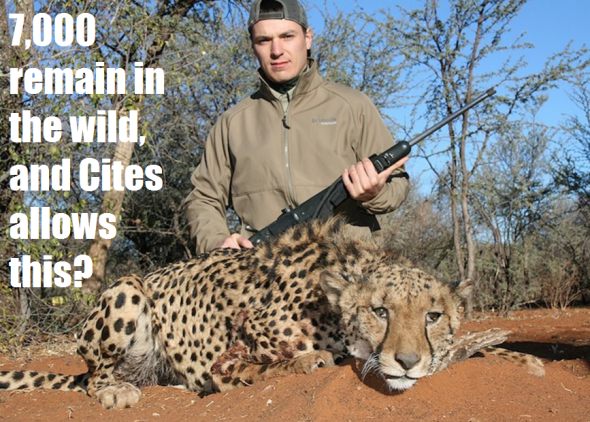 Image: Hunter, Canada - 7,000 to 10,000 Cheetah remain and this is allowed by Cites.
Image: Hunter, Canada - 7,000 to 10,000 Cheetah remain and this is allowed by Cites.
Within the African countries of Cameroon, Central African Republic, Congo, and Democratic Republic of Congo again population counts are not known. (Its’ quite possible that the species has already gone extinct). Cheetahs are already officially extinct within Burundi and Rwanda. Reports have sadly confirmed the species is also extinct within Nigeria. Poaching and over-hunting have wiped all populations out within the three central African countries. A 1974 study ‘suggested’ that few populations may be occupying both Cameroonian boundaries and Yankari Game Reserve. This report is though mere speculation and not confirmed evidence.
EXTINCTIONS TO DATE
Regional Extinctions
Extinctions have already occurred within; Burundi; Côte d’Ivoire; Eritrea; Gambia; Ghana; Guinea; Guinea-Bissau; India; Iraq; Israel; Jordan; Kazakhstan; Kuwait; Oman; Qatar; Rwanda; Saudi Arabia; Sierra Leone; Syrian Arab Republic; Tajikistan; Tunisia; Turkmenistan; United Arab Emirates; Uzbekistan and Yemen.
Possible Extinctions
Afghanistan; Cameroon; Djibouti; Egypt; Libya; Malawi; Mali; Mauritania; Morocco; Nigeria; Pakistan; Senegal, Uganda and the Western Sahara.
Known Endemic Zones
Algeria; Angola; Benin; Botswana; Burkina Faso; Central African Republic; Chad; Congo; Ethiopia; Iran; Kenya; Mozambique; Namibia; Niger; South Africa; South Sudan; Sudan; Tanzania, United Republic of; Togo; Zambia; Zimbabwe. (Updated 2015)
2015 WILD POPULATION COUNTS
(Please note the following populations below are wild and not captive nor farmed)
Reintroductions of Cheetah populations have taken place within Swaziland however to what extent the populations are within Swaziland is unknown.
What we know to-date is that populations within the “Southern Africa” (not just South Africa) hosts the largest populations at roughly some 5,000+ mature individuals. Botswana and Malawi holds roughly 1,800 mature individuals. Populations are unknown within (Angola) and ‘considered possibly extinct’. Mozambique holds some 50-60 mature individuals, Namibia 2,000. SOUTH AFRICA holds some 550 mature individuals, Zambia some 100 mature individuals, Zimbabwe 400. A large proportion of the estimated population lives outside protected areas, in lands ranched primarily for livestock but also for wild game, and where lions and hyenas have been extirpated. So we do question why trophy hunting and unregulated hunting still persists out of farmed areas.
Ethiopia, southern Sudan, Uganda, Kenya and Tanzania holds an estimated (2,500 mature individuals) however due to intense hunting pressure, poaching and habitat destruction this number could be much lower. (There is NO evidence that hunting within any of the ‘legal zones’ has increased Cheetah populations whatsoever”. Furthermore I challenge all hunting organisations within the legally allowed hunting areas to prove myself wrong? The largest population (Serengeti/Maro/Tsavo in Kenya and Tanzania) is estimated at 710.
Kenya hosts some 790+ mature wild individuals, Tanzania 560+ to 1,100 individuals. Uganda, Gros and Rejmanek (1999) estimated 40-295 with a wider range in the Karamoja region, whereas now Cheetahs have been extirpated and just 12 are estimated to persist in Kidepo National Park and surroundings. North-West Africa the species stands at no fewer that 250 mature individuals (if that).
Within Iran the ‘sub-species’ of Asiatic Cheetah - A. j. venaticus (if still extanct) stands at some 60-100 mature individuals. We do like the fact the conservation trustee is a known hunter allegedly supporting Cheetah conservation. We’ve yet to see an real improvement of Iranian Cheetahs in the country (more money talk)…
The overall “known Cheetah population” for Asia and Africa is by far more threatened that the Lion. To date there are some 7,000 known mature individuals remaining within the wild but no greater than 10,000. This sadly make the Cheetah by far more threatened than Panthera leo. African Lion populations stand at some 15,000 to 13,000 maximum. As the Cheetah population will not likely exceed 10,000 individuals - the species therefore qualifies for (vulnerable status).
Nowell and Jackson stated that Cheetah populations in the past have undergone some alarming declines, now it would seem that history is re-repeating itself (this time the specie may not survive). The Cheetah exhibits remarkable levels of genetic diversity in comparison and compared to other wild felids, so there could be a high chance the species may make it back from the near brink of extinction within the wild.
Problem is poaching and over-hunting then wasn’t as prolific as it is today. Scientists stated that interbreeding among other individuals had saved the species from bottleneck declines in the past. This history dated back some 10,000 years. Sport hunting then wasn’t an issue as it is today, so in all fairness the species could be hunted into extinction illegally or legally (with much thanks to Cites on the ‘legal part’). So in all honesty we may lose the Cheetah before the Lion.
While the causes of the Cheetah’s low levels of genetic variation are unclear [back then], what is clear is that large populations are necessary to conserve it. Since Cheetahs are a low density species, conservation areas need to be quite large, larger than most protected areas. Major areas of the African continent are being overtaken by humans, agriculture to cope with human expansion and deforestation. No longer is it a case of ‘if’ rather than ‘when’….
MAJOR THREATS
Cheetahs are ‘hunted for sport and trophies’, as well as handicrafts products. Live animals are also traded - the global captive Cheetah population is not self-sustaining. Pest animals are also removed.
In Eastern Africa, habitat loss and fragmentation was identified as the primary threat during a conservation strategy workshop (2007). Because Cheetahs occur at low densities, conservation of viable populations requires large scale land management planning; most existing protected areas are not large enough to ensure the long term survival of Cheetahs. A depleted wild ungulate prey base is of serious concern in northern Africa. Cheetahs which turn to livestock are killed as pests. Conflict with farmers and depletion of the wild prey base are also considered significant threats in parts of Eastern Africa.
In Iran, the Asiatic Cheetah A. j. venaticus is threatened indirectly by loss of prey base through human hunting activities. In addition, most protected areas are open to seasonal livestock grazing, which potentially places huge pressure on the resident ungulate populations through disturbance and potential competition. Additionally, domestic dogs accompanying the herds present a likely threat to both Cheetahs and their prey. An emerging threat is the possibility of fragmentation into discontinuous subpopulations as a result of increasing developmental pressures (mining, oil, roads, railways); this is particularly the case in Kavir N.P., currently the north-western limit of the Asiatic Cheetah’s range.
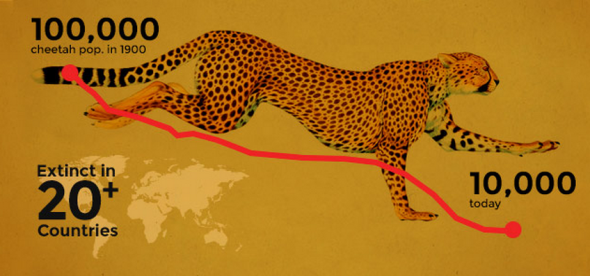 Image: Cheetah populations are more threatened than Lions.
Image: Cheetah populations are more threatened than Lions.
Conflict with farmers and ranchers is the major threat to Cheetahs in southern Africa. Cheetah are often killed or persecuted because they are a perceived threat to livestock, despite the fact that they cause relatively little damage. In Namibia, very large numbers of Cheetahs have been live-trapped and removed by ranchers seeking to protect their livestock (from government permit records, Nowell [1996] calculated that over 9,500 cheetahs were removed from 1978-1995). While removal rates have fallen, in part due to intensified conservation and education efforts, many ranchers still view Cheetahs as a problem animal, despite research showing that Cheetahs were only responsible for [3% of livestock losses] to predators. Although Cheetah in Iran have been killed because of predation on livestock, since 2003, there has been no direct evidence of killing Cheetahs, though it is likely most incidents go unreported.
“Cheetahs are also vulnerable to being caught in snares set for other species”.
Another threat to the Cheetah is interspecific competition with other large predators, especially lions. On the open, short-grass plains of the Serengeti, juvenile mortality can be as high as 95%, largely due to predation by Lions. However, mortality rates are lower in more closed habitats.
CITES [allows legal trade in live animals and hunting trophies under an Appendix I] quota system (annual quotas: Namibia - 150; Zimbabwe - 50; Botswana - 5). This was accepted by CITES as a way to enhance the economic value of Cheetahs on private lands and provide an economic incentive for their conservation. The global captive Cheetah population is not self-sustaining; Cheetahs [breed poorly in captivity] and in 2001 [30% of the captive population] was wild-caught. While analysis of trade records in the CITES database shows that these countries have reported almost no live exports since the late 1990s, Conservation groups are concerned that there is a substantial illegal cross-border trade in live animals.
There is also concern about illegal trade in skins, as well as capture of live cubs for trade to the Middle East. There is an increasing trade in cubs from [north-east Africa into the Middle East], but there is currently little trade in cubs from the Sahel region, where it was previously considered a major problem. Cheetahs are active during the daytime and there is concern that they can be driven off their kills by [tourist cars crowding around, or mothers separated from their cubs]. Burney (1980) conducted a study and concluded that [tourist cars did not seem to harm cheetahs, and in fact sometimes helped, as cheetah chases more often ended in a kill when there were cars around, distracting prey, providing cover from which to stalk, or otherwise waking Cheetahs up to notice prey in the area]. However, [tourist numbers have risen sharply by then, and its potential impact on cheetahs remains a concern].
The Eastern African Cheetah conservation strategy identified four sets of constraints to mitigating these threats across a large spatial scale. Political constraints include lack of land use planning, insecurity and political instability in some ecologically important areas, and lack of political will to foster Cheetah conservation. Economic constraints include lack of financial resources to support conservation, and lack of incentives for local people to conserve wildlife. Social constraints include negative conceptions of Cheetahs, lack of capacity to achieve conservation, lack of environmental awareness, rising human populations, and social changes leading to subdivision of land and subsequent habitat fragmentation. These potentially mutable human constraints contrast with several biological constraints which are characteristic of Cheetahs and cannot be changed, including wide-ranging behaviour, negative interactions with other large carnivores, and potential susceptibility to disease.
Disease is a potential threat to the Cheetah, as its reduced genetic diversity can increase a population’s susceptibility. However, the most serious disease mortality thus far documented in wild Cheetahs was from naturally occurring anthrax in Namibia’s Etosha National Park; Cheetahs, unlike other predators, do not scavenge carcasses of ungulates killed by anthrax, and thus [had no built-up immunity] when they preyed upon springbok sick with the disease. The Cheetah’s low density may offer some measure of protection against infectious disease; for example, Cheetahs were not affected by an outbreak of Canine Distemper Virus in the Serengeti National Park which [killed over 1/3 of the Lion population]. Serological surveys of Cheetahs on Namibian farmland indicate some exposure and survival of the disease.
We are losing the Cheetah faster than the specie of Lion. Although some regulations are in place with the species listed on Appendix I (Cites) its quite likely we’ll lose wild populations should hunting, poaching and unregulated hunting not stop now.
Thank you for reading.
Dr Jose C. Depre
Environmental and Botanical Scientist.
Sources; Cites, Red List, Wiki, Wild Forum, DEA, CCG, DSI, PHASA, Cambridge University, Oxford University.
Endangered Species Friday: Ailurops ursinus
Endangered Species Friday: Ailurops ursinus
A. ursinis was identified back in 1824 by Dutchman Dr Coenraad Jacob Temminck - (31 March 1778 – 30 January 1858) was a Dutch aristocrat, zoologist, and museum director. Listed as vulnerable the species is endemic to Indonesia on the island of Sulawesi of which there remains limited data on this rather fine specimen of marsupial that resides in the family phalangeridae. (Image: Young Bear cuscus)
Populations of the (Bear cuscus) as its commonly known continue to steadily decline even though there are limited - conservation measures in place protecting the species (There remains as yet no data on population size). The Bear cuscus has practically gone extinct within the Tangkoko-DuaSudara Nature Reserve of which a staggering 95% decline has been recorded within the region alone of which the primary threat within the nature reserve is hunting and trade for pets.
North Sulawesi has also seen a staggering decline identical to the population decreases documented within the Tangkoko-DuaSudara Nature Reserve too. Yet again hunting and the illegal pet trade are very much responsible, and may very well within the next five to ten years lead to a complete extinction occurring.
As much as I myself hate to say it I am pretty certain from viewing statistical data past and present that extinctions are going to occur even sooner than predicted. Should extinctions occur it proves yet again that poaching is having a disastrous effect onto just about every African and Asian species known.
Habitat loss and forest clearance are all playing a pivotal roll at decreasing populations of this beautifully attractive marsupial. As a conservation and botanical scientist sometimes I wonder to oneself why we even bother to help species of animals and flora when some governments show no support, or respect whatsoever in our quest to protect and serve. Then I remember, my children and their children’s heritage is just as important as mine and the teams fight to protect.
Bear cuscus are known as arboreal marsupials meaning, they mostly thrive and spend the majority of their peaceful and playful lives within trees and dense forest. Unfortunately these forests and trees are slowly dwindling in size primarily for land clearance to support local farms and communities and, not forgetting slash and burn activities. I cannot begin to imagine what these creatures think and feel when destructful and greedy humans destroy their homes and pastures. The feeling of not-knowing-when such harm is to be inflicted must be terrorizing for them.
The genus contains the following single species that is known to be related to the Bear cuscus; Ailurops melanotis that inhabits the Salibabu Island listed as (critically endangered) and endemic to Indonesia on the island of Sulawesi. Typically found in undisturbed tropical lowland moist forests, this species does not readily use disturbed habitats, thus it is not usually found in gardens or plantations. It is a largely diurnal and as explained a arboreal species that is often found in pairs. Diet usually consists of a variety of leaves, preferring young leaves, and like many other arboreal folivores it spends much of its day resting in order to digest similar to the Koala bear of Australia.
Image: Bear cuscus relaxing in the canopy of Tangkoko
The only known conservation actions that are taking place are within in few protected areas, that include: Tangkoko-DuaSudara Nature Reserve, Bogani Nani Wartabone National Park, Lore Lindu National Park, Morowali National Park, and a host of forest reserves. This species is nominally protected by Indonesian law. Unfortunately even though the species is protected the illegal pet trade still continues of which I myself have on many occasions located small pet shops in Indonesia selling Bear cuscus from rusty, cramped cages.
Threats
The species is threatened by habitat loss due to clearance of forest for small-scale agriculture and through large-scale logging. It is also heavily hunted by local people for food, and collected for the pet trade. Cuscus hunting forays are often planned before special occasions (e.g., birthday celebrations) in order to provide future guests with the greatly appreciated meat. (These inferences are based on some six months of residence among Alune villagers in 1993–95, which included participation in forest activities and standard ethnographic data collection.)
Thank you reading.
Dr Jose C. Depre
Environmental and Botanical Scientist.
Please donate by clicking the link below and help the board of directors establish their Viet Nam pet and wildlife rescue and rehabilitation clinic today. Without your help we cannot take dogs, cats and small bush meat animals of the streets and into safety. No donation is to small and all donations are greatly and kindly appreciated.
Please donate here:
https://www.facebook.com/SayNoToDogMeat/app_117708921611213
Stay up to date with our SNTDM newsletter:
https://www.facebook.com/SayNoToDogMeat/app_100265896690345
Thank you.
Stay up to date with African and international environmental and animal welfare affairs here:
https://www.facebook.com/pages/International-Animal-Rescue-Foundation-World-Action-South-Africa/199685603444685?fref=ts
Endangered Species Monday - Axis calamianensis
Endangered Species Monday - Axis calamianensis
This Mondays endangered species article we take a brief look into the secretive and rather elusive life of the Calamian Hog deer scientifically identified as - Axis calamianensis the species is also commonly known as the Calamanian Deer, Calamian Deer, Calamian Hog Deer or the Philippine Deer.
(Pictured above: Calamian Hog stag)
A. calamianensis was formally identified back in 1888 by Dr Pierre Marie Heude (1836–1902) was a French Jesuit missionary and zoologist. Born at Fougères in the Department of Ille-et-Vilaine, Heude became a Jesuit in 1856 and was ordained to the priesthood in 1867. He went to China in 1868. During the following years, he devoted all his time and energy to the studies of the natural history of Eastern Asia, traveling widely in China and other parts of Eastern Asia.
From 1986 - 1990 A. calamianensis was listed back then as vulnerable however, since this time much has changed regarding the species habitat, and way of living. From 1994 Dr Groombridge identified the need to re-list the species as (endangered) of which a further evaluation after a more in-depth census was concluded (1996) showed the species to be verging near extinction. The last “population census” undertaken in 1996 confirmed the species was still endangered, which led to evasive and aggressive conservation projects to be put into action to preserve the species.
Image: Calamian stag a little uneasy on his feet
Endemic to the Philippines the species is restricted to the Calamian Islands in the Palawan faunal region. The species occurs on three of the four larger islands of Calamians, i.e. Busuanga, Calauit and Culion. Sketchy reports have suggested the species also occurred on at least nine other related islands too however, little evidence backs these claims up.
Reports have confirmed that localized extinctions have occurred in some (78%) of these islands; (Bacbac, Capari, Panlaitan, Galoc, Apo, Alava and Dicabaito), and to survive on only two of these islands, namely Marily and Dimaquiat. A. calamianensis is not known to occur anywhere else from outside of its now fragmented ranges.
Commonly viewed within most of its native range back in the middle 1940’s population sizes have seriously diminished since the late 1990’s. While many drastic declines were seen throughout the 1990’s one area that didn’t see population declines was that of the extreme south of Culion, by the mid-1970s.
By the time the Calauit Island Game Preserve and Wildlife Sanctuary was created, in some way to preserve species populations, conservation actions were already to late of which populations had declined quite rapidly. Reports placed the population size from 1,900 “individuals” which equated to around 250 “mature individuals (if that).
Recent surveys from 2006 showed quite drastic declines of which hunting was yet again the main primary cause for the species nearing extinction (many hunters try to defend and debate this - yet the evidence is there in black and white for them all to view). Despite a negative outlook from the last “official” 2006 census populations were still said to be quite widespread in Calauit, Busuanga and Culion. The 2006 census conducted by environmentalists, Rico and Oliver also confirmed the species populations were quite dense on the islands of Marily and Dimaquiat.
The overall reports into present population sizes though is not good, and its with sad regret to report that populations are continuing to decline at a very rapid rate, despite the species coming under some protective plans there really is no real “protection or even law implemented into action” to protect this species for future generations to come. Listed on the Convention on International Trade of Endangered Species (Cites) Appendix I localized hunting for food continues to place the entire species in “great danger of nearing extinction” within the next five to seven years. However I must state that “should” extinctions occur in the wild, captive breeding programs are already in place in the hope to later reintroduce the species into a newer, and safer habitat.
Image: Doe and Stag
Current plans to preserve species are that of protective breeding programs for later reintroduction back into the wild. San Diego Zoological Gardens currently hosts some fifty four (54) inhabitants successfully bred within the zoo and managed well.
Threats
Currently research has proven the local people to hunt the species for food and use within dress and musical instrument production. Hunters within the species endemic island ranges are known to hunt the species for its antlers for use within the home as a decorative piece. Antlers are prized among the locals.
The species is threatened due to hunting pressure and human settlement and agricultural expansion over its very limited range, coupled by the evident lack of effective and sustained enforcement of the strong local protective legislation.
Hunting was particularly severe during the mid-1970s, but seemingly declined in most areas during the 1980’ and 1990’s, except on Calauit where hunting pressure increased dramatically following the resettlement of the island by former residents under the auspices of the ‘Balik (Back to) Calauit Movement’. In 1986, 51 out of the 256 families evicted from the island ten years earlier had re-settled on the island, and by 1992 the settlers numbered nearly 500 people.
Much of the hunting of the species is recreational, and also to provide venison to the local markets. On Calauit, introduced African ungulate populations are increasing but are probably not competing with Calamian deer. A presidential proclamation that precluded removal or control of exotic species, and the movement or management of Calamian deer on Calauit Island was recently amended, thereby also potentially enabling the better future control of the exotic ungulate populations, though in fact many of these populations have also been seriously reduced by poaching.
While relatively large parts of Busuanga and Culion Islands are still undeveloped and sparsely inhabited, there are no proper reserves on either.
The following conservation actions are in place or still under amendment:
1. Monitor current status on all the three islands and determine population trends. Evaluate levels of hunting and habitat loss.
2. Strengthen existing protected area system via establishment of new (additional) reserves and development and implementation of properly structured conservation management plan for Calauit that includes improved infrastructure, and measures to combat poaching.
3. Agree and establish a zoning system within Calauit in collaboration with all relevant stakeholders, which enforces strict protection of the core area.
4. Establish protected areas on Culion and Busuanga, based on habitat and deer status surveys.
5. Undertake behavioral and ecological research of Calauit deer to determine management requirements. Conduct
more detailed studies in selected areas.
6. Initiate a conservation education program using Calamian deer as a flagship species to promote a wide variety of related conservation activities, including combating the bush meat trade.
Unfortunately due to the species being so rare there remains very little video data on the animal. Below and included for your information depicts a captive breeding program, and not a public zoological garden. Captive breeding programs in most cases forbid the public from entry. Children can be heard in the background however we must note, protective breeding programs are out of public site. Images above include other species of red and velvet deer too. As explained due to such rarity of this animal obtaining any real positive data of the animal has proved at the best of times difficult. Please contact myself below for further information or questions.
Thank you for reading
Dr Jose C. Depre.
Revelation 16:16 Har-Ma ged’on or Human Fault?
Revelation 16:16 Har-Ma ged’on or Human Fault?
Since 2000 International Animal Rescue Foundation has been following, reporting and researching mass animal deaths around the globe and (some) freak unexplained deaths that have left scientists baffled. Furthermore the increasing avian bird flu pandemic that is threatening many birds and dogs looks set to be the largest outbreak in history.
Some of the worst cases we and the I.A.R.F have viewed are unexplained whale, seal and dolphin beaching’s all of which have been occurring along coastlines and within local fresh water rivers. Pollution has been the main number one factor blamed for many land and marine deaths. However other deaths have left ourselves and scientists puzzled as to why many animals have been found dead in large piles, what has led to such large numbers of animals dying off and how can such large die offs be prevented?
The vast majority of animal deaths seem to be occurring within Asia and the United States. Research has shown that there is no real limited location in either the United States or Asia. 8th June 2015 in Florida hundreds of dead fish washed up onto the local shoreline. A few days prior to this a large fish kill in a lake in Mattoon, Illinois was witnessed. Meanwhile in Lake Aldama, Mexico 3rd June 2015 tons of fish were located dead floating on the surface in what has been stated as “unexplained mass deaths”.
Image: 2 waterways that will host 2016 Olympic events in Brazil are filled with dead fish and trash 16 months before the games.
Within the past twenty eight days hundreds of dead fish appeared in the waters of Michoacan, Mexico. Hundreds of dead fish were found washed up along Big Bear Lake in California, America. Meanwhile thousands of dead fish were found washed ashore on a river in Rhode Island. 30th May 2015 tens of thousands of dead fish were found washed up along Flanders bay, New York.
Environmental teams from International Animal Rescue Foundation Scotland, England and France have also reported and viewed with dismay mass die offs and stranding’s off the British, Scottish and French coastlines too. 2nd June 2015 - 21 pilot whales were located stranded, ten of which were reported dead in Skye, Scotland. Within Rennes, France a large die off, of fish was witnessed in the River close to Rennes. 27th may 2015 hundreds of fish were located in the River Darlinton, Great Britain. On the 23rd April “thousands” of dead star fish were located off the coast in Cumbria, Great Britain and, on the 17th April 2015 “scores” of dead “dolphins and whales” were found washed up on the along the coast of France in what scientists state as “strange” and “unexplained”.
Image: Ireland, Lissadell Beach, Co Sligo, strewn with dead starfish.
There are many explanations as to why so many marine and fresh water animals have been found dead most of which are put down to chronic pollution, whales and dolphins colliding with marine vessels, changes in ocean temperatures, earthquakes down to environmental changes and, sonar operations by naval forces. Some marine experts and Animal Activists have blamed military operations within the seas and close to land. Conspiracy theorists are blaming secretive governmental organisations and operations while religious individuals are stating the time is coming 16:16 Har-Ma ged’on. Environmental scientists have found neither evidence of mass animal deaths caused by covert government operations or Har-Ma ged’on nearing.
Conspiracy theorists and religious individuals need to put their suspicions and beliefs to one-side and concentrate on the more realistic issue which is that of human blame. Meanwhile, while there is evidence to prove that human activity and negligence is to blame it must be noted too the “unexplained events” that still cannot be answered are a cause for concern and need more in-depth investigations.
Image: Pilot whales stranded off the coast of Scotland, Skye. Nine died.
Below I have included three major culprits that International Animal Rescue Foundation’s Marine Department have been investigating since 2000. While these three culprits remain major players one must not forget aggressors such as climate change of which reveals little evidence on mass marine deaths and deliberate or accidental damage such as oil spillage or vessel waste dumping out at sea. Below and for your information is collated research in word format and video evidence too. If you’d like to discuss this matter further please do not hesitate in contacting myself or anyone of my team here at: [email protected]
Red Tide: Algae Bloom/ Red Tide.
Image: Red tide (HAB) Harmful Agal Bloom of the coast, Sydney Australia.
An algal bloom is a rapid increase or accumulation in the population of algae (typically microscopic) in a water system. Cyanobacteria blooms are often called blue-green algae. Algal blooms may occur in freshwater as well as marine environments. International Animal Rescue Foundation’s Marine Department has located much evidence of such algal blooms responsible for mass fish and whale deaths.
Of particular note are harmful algal blooms (HABs), which are algal bloom events involving toxic or otherwise harmful phytoplankton such as dinoflagellates of the genus Alexandrium and Karenia, or diatoms of the genus Pseudo-nitzschia. Such blooms often take on a red or brown hue and are known colloquially as red tides.
During the 13th May 2015 reports of many hundreds of Diamondback Terrapins were reported within Flanders Bay. Marine scientists have stated that saxitoxin is to blame for the mass animal deaths however the jury is still out on this issue. I must also note that Flanders Bay has in the past six months been the main focus of attention for marine biologists as hundreds and hundreds of dead marine life has been found washing up within the area with no real explanation.
Saxitoxin (STX) is the best-known paralytic shellfish toxin (PST). Ingestion of saxitoxin (usually through shellfish contaminated by toxic algal blooms) is responsible for the human illness known as paralytic shellfish poisoning (PSP).
The term saxitoxin originates from the species name of the butter clam (Saxidomus giganteus) in which it was first recognized. But, the term saxitoxin can also refer to the entire suite of related neurotoxins (known collectively as “saxitoxins”) produced by these microorganisms, which include pure saxitoxin (STX), neosaxitoxin (NSTX), gonyautoxins (GTX) and decarbamoylsaxitoxin (dcSTX).
Saxitoxin has a large environmental and economic impact, as its detection in shellfish such as mussels, clams and scallops frequently leads to closures of commercial and recreational shellfish harvesting, especially in California, Oregon, Washington, and New England. On researching current marine deaths in the California state of America I must note that Saxitoxin and human induced environmental change has been noted as causing the deaths of many seals and fish. The local seal deaths must not be confused with pollution or Saxitoxin but more increasing water temperature that is forcing fish further away from the shoreline. Due to mother seals having to fish further afield their cubs are being left for longer periods thus starving practically to death.
International Animal Rescue Foundation found quite alarming evidence of Saxitoxin an incredibly potent and toxic chemical known to be used within the armed forces as a “suicide pill” freely on sale via a quick and easy Google search. The Ead department furthermore located members of the public asking where they could obtain such a harmful chemical of which should only be handled by (experienced chemical professionals).
Back in August 2003 Saxitoxin was to blame for the deaths of many humback whales. The deadly alga was the leading suspect in the mass death of humpback whales around 150 miles off Cape Cod, say marine experts.
Carcass sightings suggest that at least 12 whales, mostly humpbacks, have died in the Georges Bank area, making it one of the worst known mass fatalities. “It’s really quite disturbing,” says whale biologist Phillip Clapham of the Northeast Fisheries Science Center in Woods Hole, Massachusetts.
A red tide of the toxic algae Alexandrium fundyense is the most likely culprit. The algae’s poison, saxitoxin, killed 14 whales in the same area in 1987. Saxitoxin can accumulate in mackerel which whales eat. Scientists did also point to a very slim chance of acoustic operations conducted at sea by the Navy.
International Animal Rescue Foundation has found Saxitoxin to be the main culprit thus far related to fish, whale, seal and other marine deaths. Saxitoxin has been blamed for the recent unexplained deaths of thousands of lobsters within California this past month too.
Could it also be a sheer coincidence that all deaths seen within Asia, United States and South America are somehow related to “Saxitoxin” and not religious events, the rebirth of Jesus Christ or covert military operations?
STX is a neurotoxin naturally produced by certain species of marine dinoflagellates (Alexandrium sp., Gymnodinium sp., Pyrodinium sp.) and cyanobacteria (Anabaena sp., some Aphanizomenon spp., Cylindrospermopsis sp., Lyngbya sp., Planktothrix sp.)
STX has been found in at least 12 marine puffer fish species in Asia and one freshwater fish tilapia in Brazil. However, the ultimate source of STX is often still uncertain. In the United States, paralytic shellfish poisoning is limited to New England and the West Coast. The dinoflagellate Pyrodinium bahamense is the source of STX found in Florida.
Recent research shows the detection of STX in the skin, muscle, viscera, and gonads of “Indian River Lagoon” southern puffer fish, with the highest concentration (22,104 μg STX eq/100 g tissue) measured in the ovaries. Even after a year of captivity, the skin mucus remained highly toxic. The various concentrations in puffer fish from the United States are similar to those found in the Philippines, Thailand, Japan, and South American countries. Coincidentally all of these countries have the “largest” amount of fish and whale die offs. However I must note that my mere speculation must not be taken for an answer.
Pollution: Human Negligence.
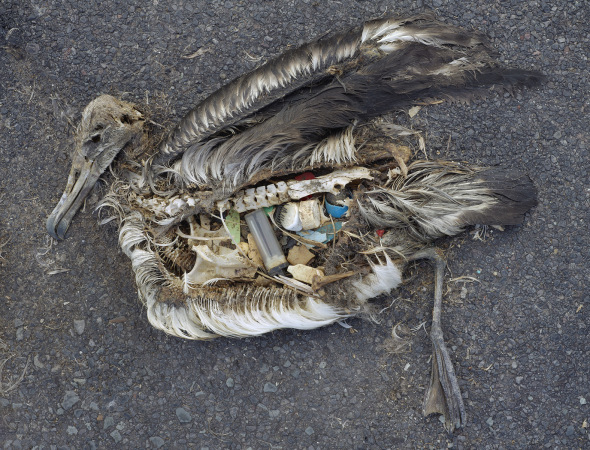
Image: Shocking - stomach contents of a dead Albatross.
I’m a great lover of birds and viewing this image has distressed myself countless times. Daily I ask why do we as humans treat our planet like a dumping ground of which animals suffer dearly.
While Mother Nature is naturally attacking herself we must not forget that human negligence is overall the biggest culprit known to be causing countless marine and fresh water animal deaths. Pollution increases as human population does and a colossal lump of everyday natural and man-made human waste sadly does end up within fresh and marine waters.
10th January 2015 the Environment Agency in Leicestershire, United Kingdom blamed human pollution for causing the deaths of “thousands of fresh water fish”. Farm slurry was the main culprit here of which the Environmental Agency concluded within their report as the main culprit.
Waterway manager for the trust, Neil Owen, said: “It’s really sad that we’ve had so many fish die from the careless actions of an individual which allowed slurry to enter our waterway. The end count was said to be “60,000” fish dead due to one ignorant and unprofessional action of a single farmer.
Meanwhile this past April tons of dead fish have been removed from a Rio de Janeiro lagoon where Olympic events are to be held in 2016, sparking debate among officials and scientists over what caused the mass die-off, as well as fears that the water may be unsafe for athletes.
The die-offs are becoming a common occurrence in Rio, where rivers, lakes and even the ocean are blighted by raw sewage and garbage. Officials have argued over the cause, with Rio’s environmental secretariat insisting last week that the incident is the result of the sudden change in water temperature.
“The intense rains that happened last week and a rise in the sea levels led to a spike in the [sea] water entering the lake, causing a thermal shock,” the secretariat said in a statement, adding that the water temperature had fallen by 7.2 degrees Fahrenheit in a short period of time. Many scientists disagreed with that explanation, pointing to pollution instead.
January 12th 1988 pollution was blamed for the deaths of countless scores of beluga whales. Autopsies of dead belugas washed onto the banks of the river have found very high levels of more than 30 hazardous chemical pollutants, including DDT, polychlorinated biphenyls or PCB’s, the pesticide Mirex, metals such as mercury and cadmium, and polycyclic aromatic hydrocarbons similar to those found in cigarettes and regarded as cancer-causing agents.
The diseases found in the 72 dead whales examined so far include bronchial pneumonia, hepatitis, perforated gastric ulcers, pulmonary abscesses and even a case of bladder cancer. A majority of the whales appear to have died from septicemia, or blood poisoning, which killed them because their immune systems failed.
While the above report dates back to the last century one would be led to believe that governing bodies would have at least (cleaned their act up). Unfortunately that is not the case. In August of 2014, biologists from the Virginia Aquarium and Marine Science Center Standing Response Team were notified of a particularly unusual sighting regarding a long young female sei whale. She was spotted swimming up the river, which is particularly unusual as these creatures are typically found in the deep waters of the Atlantic.
A necropsy revealed that the whale had swallowed a shard of rigid, black plastic that had lacerated its stomach and prevented it from eating. They found that she had also been struck by a ship. The shard of black plastic was later found to be a discarded DVD case.
To date International Animal Rescue Foundation has uncovered much evidence of marine pollution responsible for the deaths of small and larger fish down to entire shoals of fish and pods of dolphins. Plastic, carrier bags, oil and chemical pollution all reign in at number one and not the Coming of the new Jesus Christ or even a (not so) secret government operation aimed at killing humans and our precious wildlife. Think about it for a brief minute. Why would the United States (E.g) wish to kill hundreds of thousands of fish off when fish is a staple diet and major import and export monetary gain?
Naval Marine Operations: Acoustics.
Image: Whale death caused by naval sonar operations.
Despite natural events and pollution being the major two factors here there still remains yet another problem within our oceans that is angering Animal Activists, Marine Biologists and other experts. Acoustic activities, drilling and military marine operations reign in at number three.
Despite many reports and scholarship articles by leading scientists and marine agencies sounding the alarm acoustic disturbance has been noted and reported to be killing, injuring or seriously impacting on the physical health of whales, fish and crustaceans for some years. Sonars used by international military navy vessels from around the world are giving scientists somewhat of a headache - and - stopping such operations within the deep seas is also another problem especially when sonars are required in all but most of the naval vessels.
Back in 1963 of the Gulf of Genoa, Italy Naval Sonar (NS) operations led to the stranding of 15 Cuvier’s beaked whales (cause - naval maneuvers). Back in 1998 in the Canary islands +12 Cuvier’s beaked whales stranded with a further Gervais’ beaked whale stranding too (cause - FLOTA 88 naval exercise). Back in 2003 the following - Cuvier’s beaked whale (9), Blainville’s beaked whale (3), beaked whale spp (2), Minke whale (2), Atlantic spotted dolphin (1) all stranded, (cause - Naval MFA operation).
One of the very worst cases researched on was seen in Marion Bay, Tasmania where some 145 Long finned Pilot Whales stranded themselves, (cause - “suspected” use of sonar by two naval mine sweepers). Back in 2008 some 26 dolphins stranded themselves off the coast of Cornwall, Great Britain, (cause - Naval exercise but no ship sonar in use except HF hydrographic sonar on HMS Enterprise).
Three of the most commonly seen culprits have been included within this article for your information. Unfortunately while we are aware of these culprits more and more whales, fish and smaller sea creatures are washing up dead around the planet. While some cases cannot be answered due to unknown and non-investigated causes the vast majority of mass animal deaths eventually do indicate - humans as the major player while, natural events such as blooms come second and pollution ranking in at first (Still no evidence of a re-birth of Jesus Christ or the world ending though). Our seas like our lands and airways are becoming more and more congested and with each increase of human activity seen, more and more deaths of both land and marine animals will come.
International Animal Rescue Foundation has located no hard hitting evidence that proves the world is nearing an end, a re-birth of Jesus, Armageddon style apocalypse or (not so) secret military operations responsible for the deaths of many marine, fresh water and land animals.. However while the organisation can rule out a new Jesus re-birth and events written into religious scripture there does remain some suspicion surrounding the High Frequency Active Auroral Research Program or, commonly known as - (HAARP). However any such investigative studies on the (HAARP) program have been quashed as the program will be shutting down after informing Congress last year (2014) that funds needed to be used elsewhere on other weather modification programs. In reality the program is just entering a new phase
Concluding:
We are Mother Natures worst enemy and not any entity within a religious or conspiracy theorists scripture. Humans are polluting the atmosphere, littering the oceans and land, destroying natural habitat, over-populating, displacing animals, killing marine animals through the use of naval exercises and on, and on, and on.
Some people need to look beyond the computer, the conspiracy field of nonsense, religious dates and begin laying the blame at their own two feet. Failing this many more marine creatures and animals will subsequently perish.
Thank you for reading.
Dr Jose C. Depre.

